May 16, 2021
Martha O'Kennon
The color is what we're not going to be able to forget in this lovely flower. Second is the beginning of a season of Dame's Rocket, or, as some call it, Spring Phlox. Third is the Dandelion, so bright and some would say so pesky. We must like pesky!
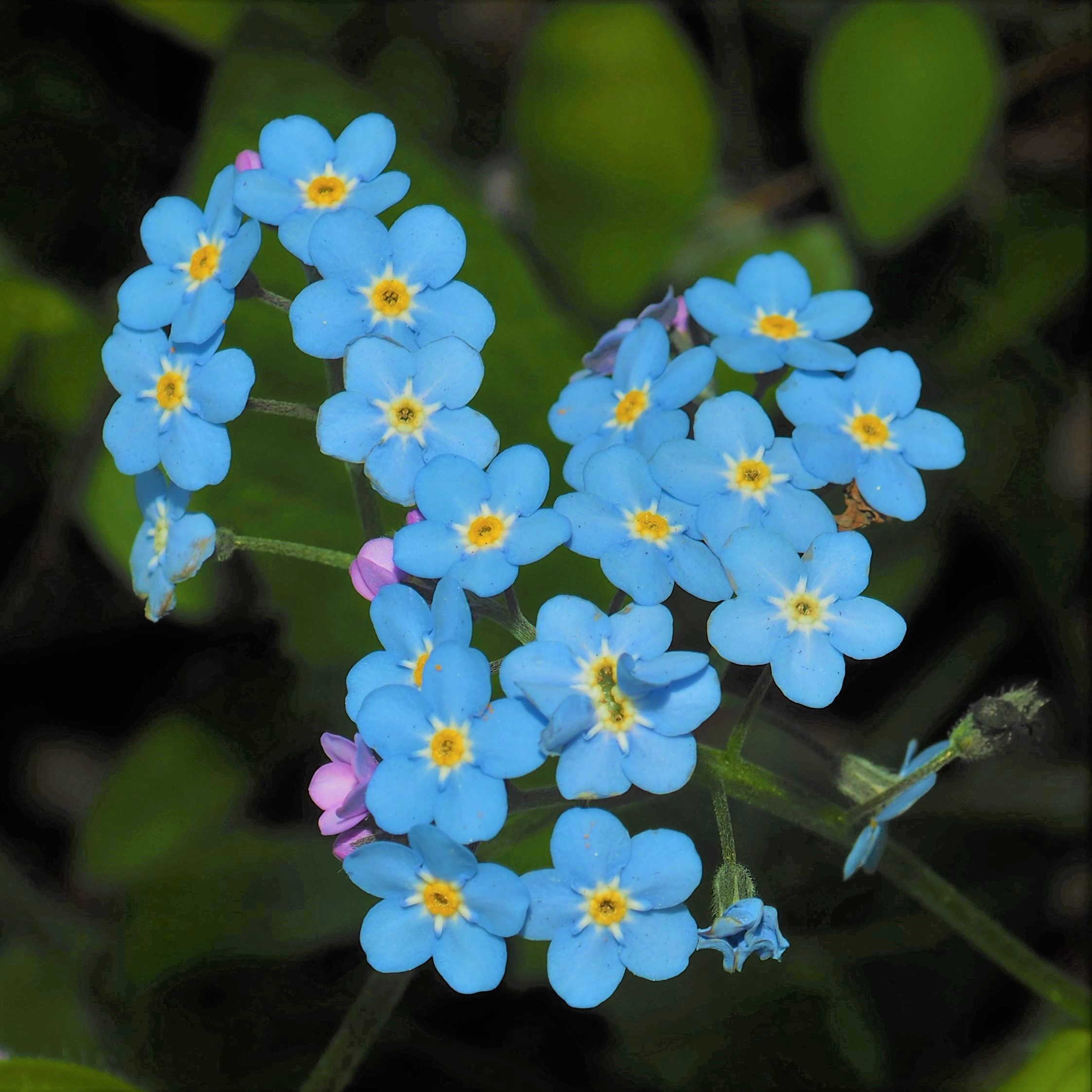

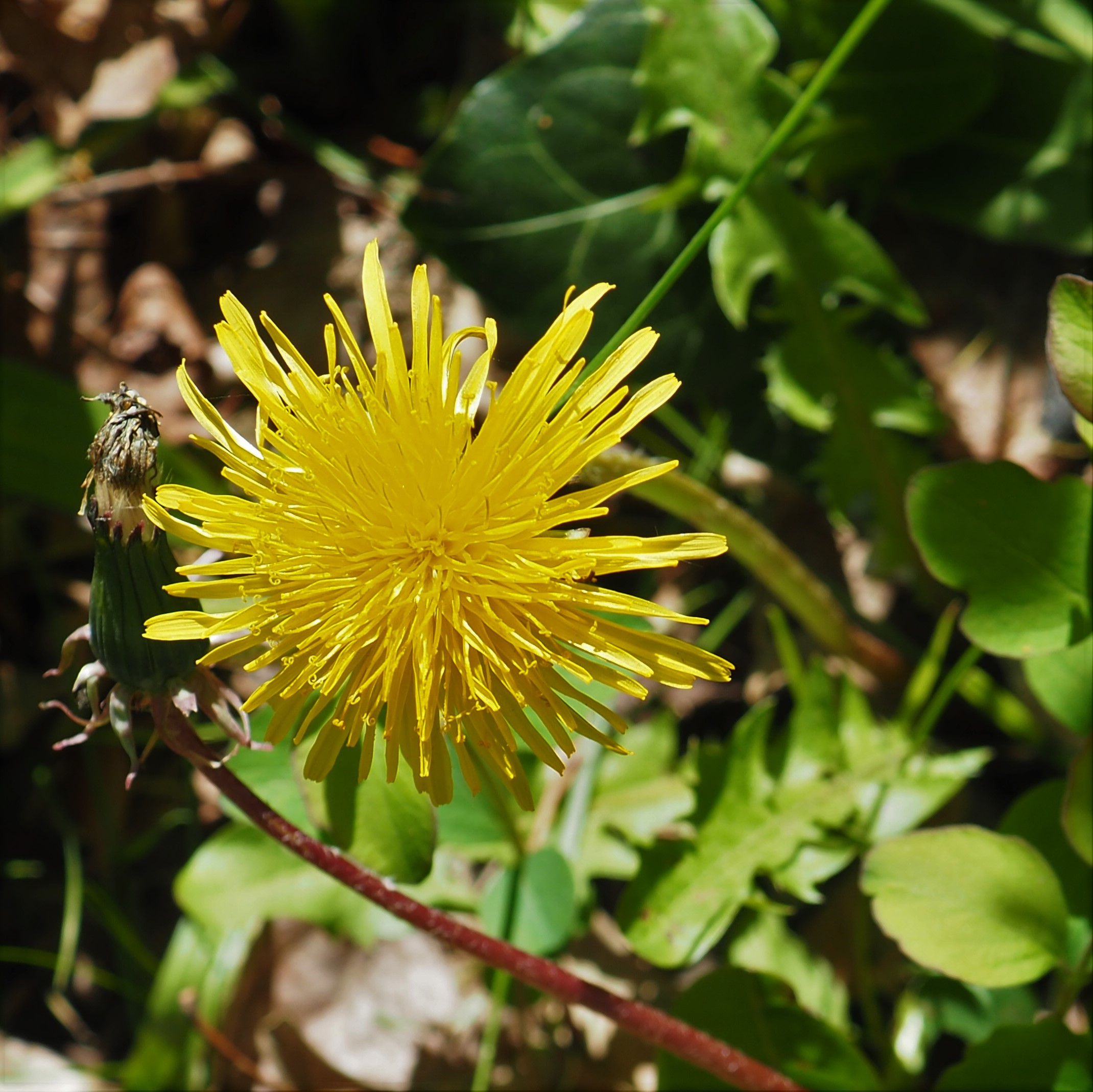
Remember that there is information in the name of the file for each image. You can see it by mousing over the image - look at the lower left of the screen. Or you can click on the image to get to the (usually) larger image. Then the info is displayed in the address line above. Sometimes the second click will actually display a different view of the original image.
After that cold snap, the Ants are once more racing gladly about the edges of the paneling on the shop siding, snapping up an odd treat. Actually this first Eastern Black Carpenter is racing down the sidewalk with a big treat. Number 2 is on the shop siding. I don't know what she is about to snap up but her jaws are ready! Third is a Small Honey Ant, who seems to have tucked her tummy so that we can't see the usual pointed gaster.
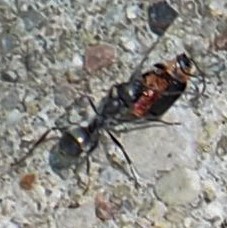
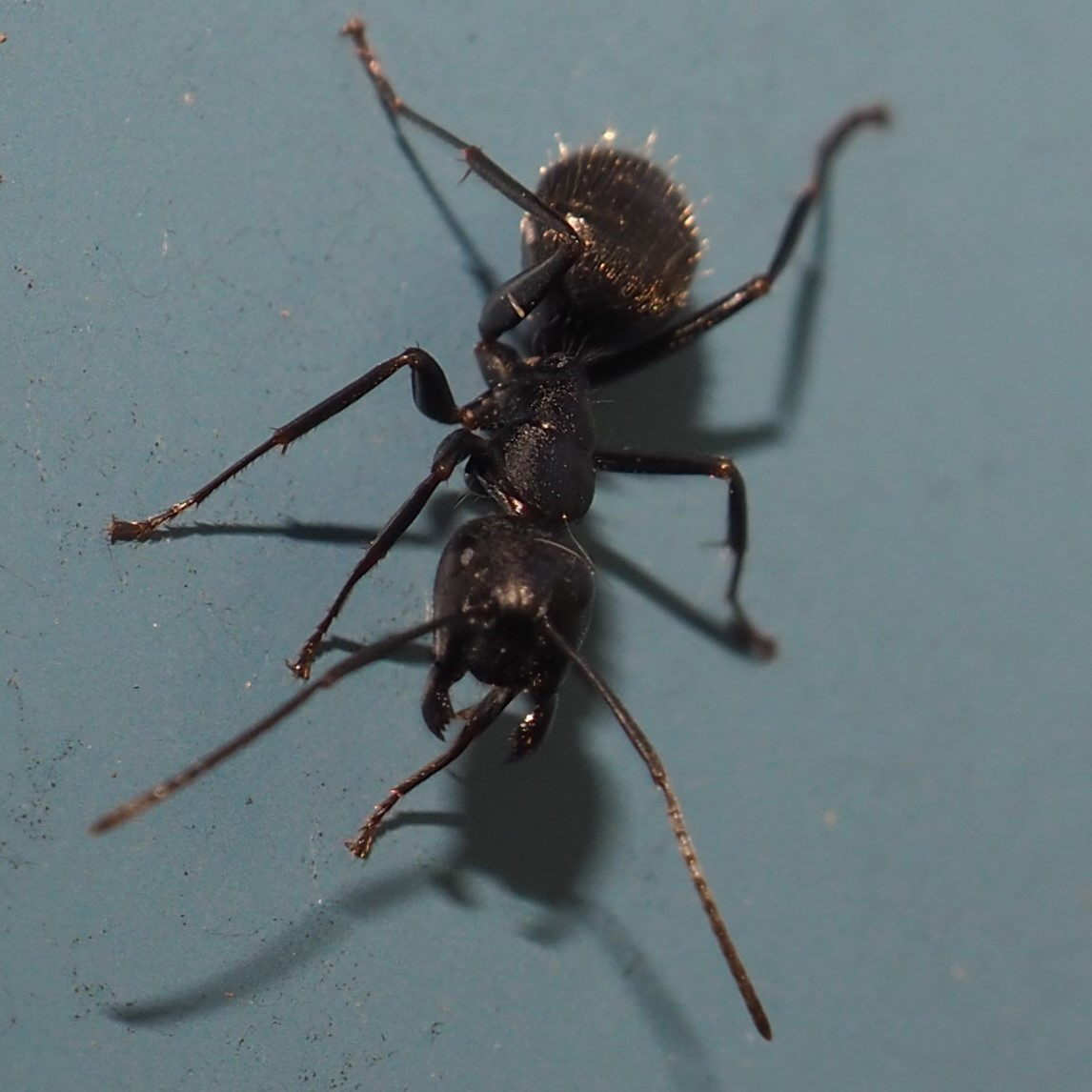 H
H
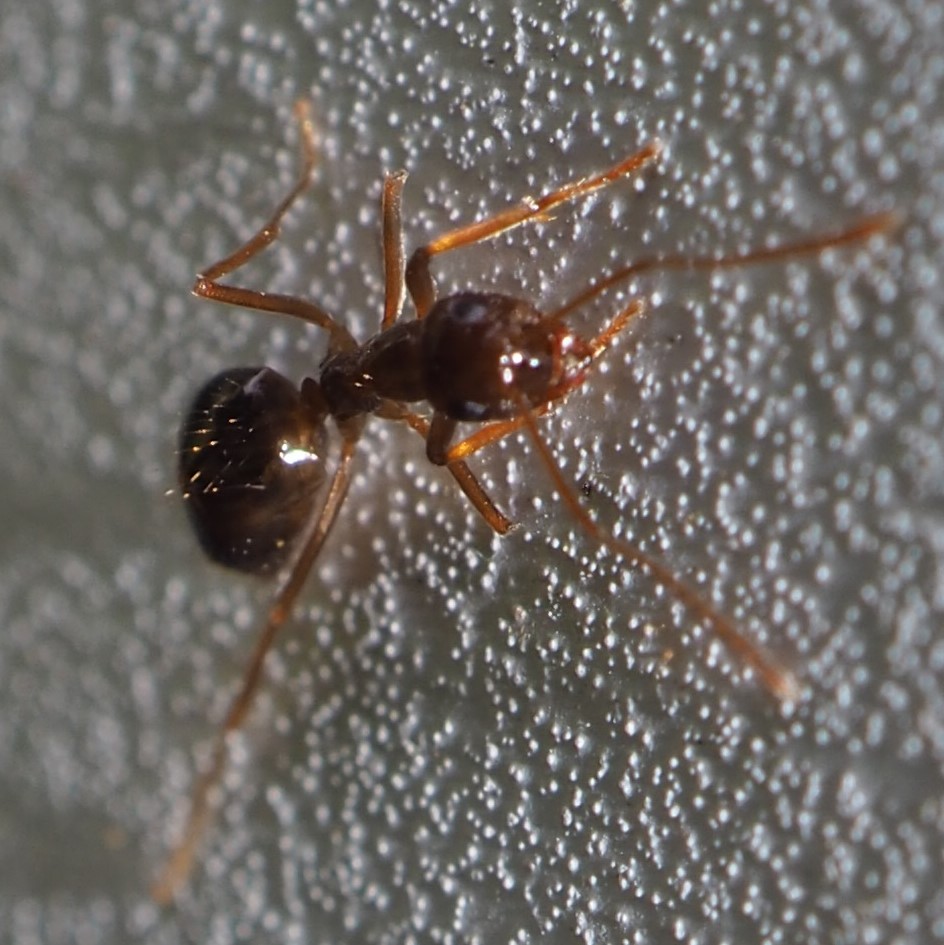
The Smaller Carpenter Ant (first two) is a bright cheery sight, with its hint of red in its thorax. Third is a mystery to me, but seems to be bristling with excitement.

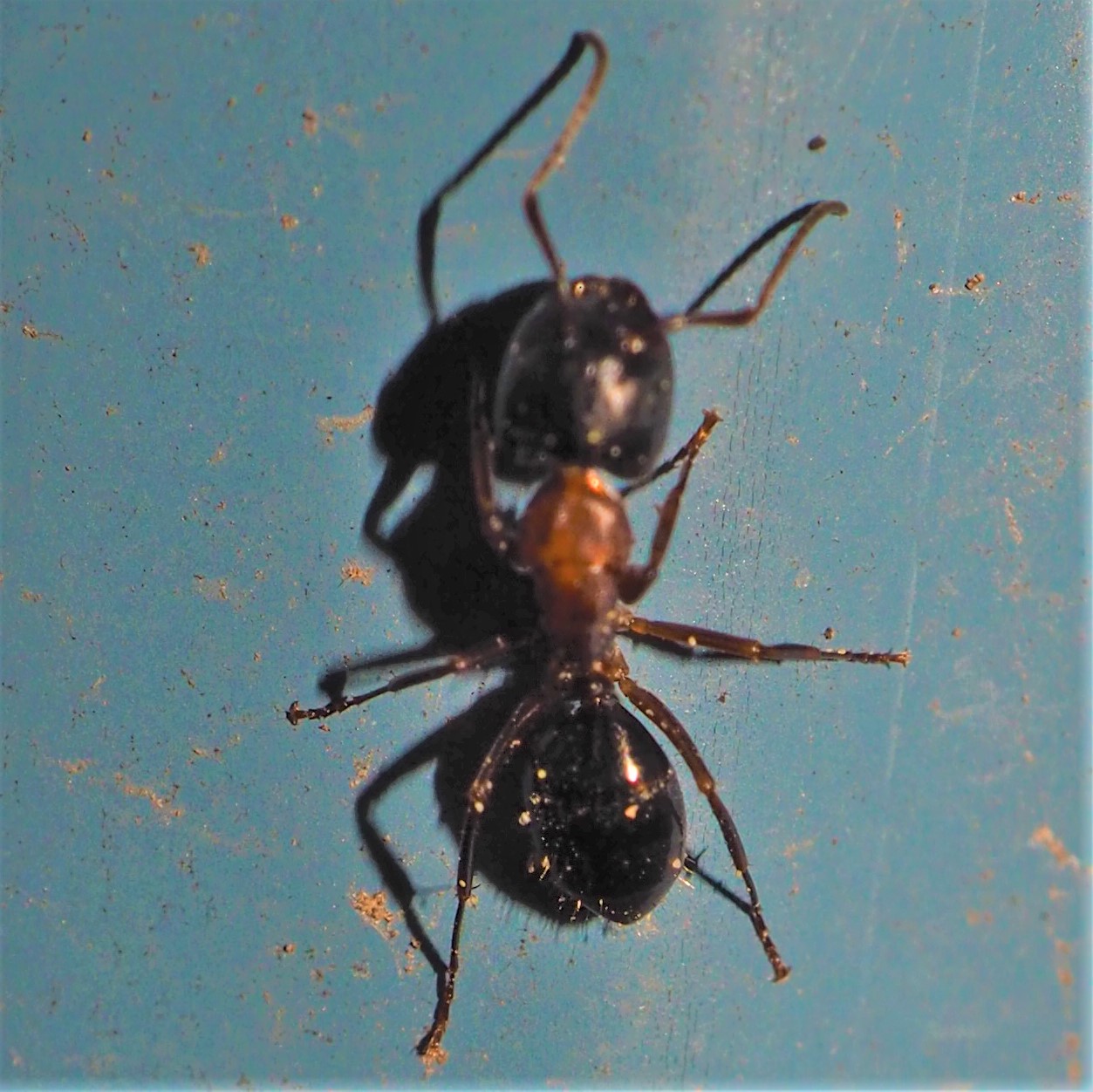
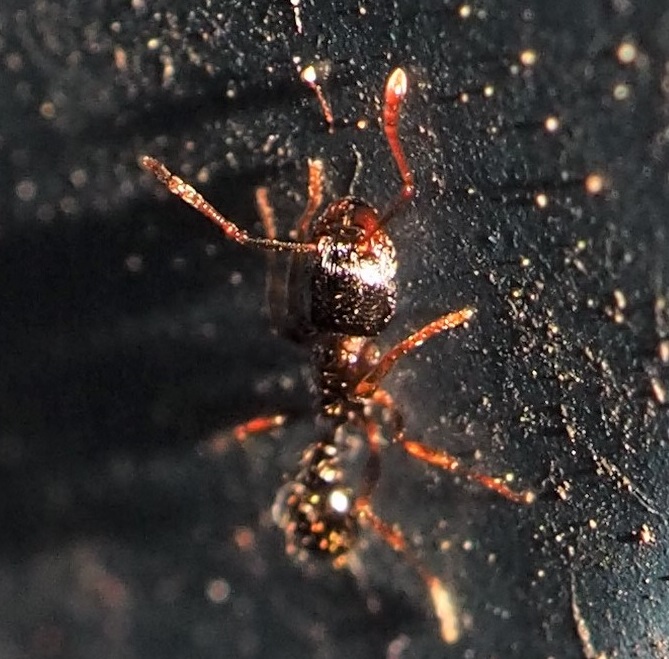
Kathleen Seidl passed along this cartoon about Ants.
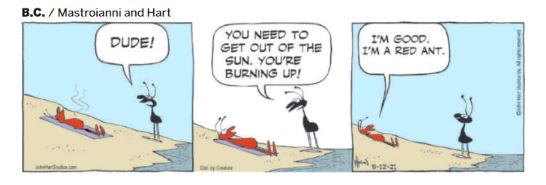
Last week I showed you the most exciting development yet in the story of the Ectopsocus meridionalis Barklouse eggs that we had so many of on the North side in the Autumn, through the Winter, and which washed away in March with that big first rain! Well, on May 4, suddenly one little Adult appeared on the SOUTH side of the shop at the fourth panel from the east corner. On the 9th, a new one appeared on the South side at the 9th panel from the east. Then on the 6th, none were there but this little clutch of eggs appears right at the place where the first Adult had sat. A few days later, another Adult appeared on the East side at the 9th panel from the south. By the time I turned around she was gone! But don't be disappointed. I'm {almost} sure that soon we'll be hearing the patter of tiny half-millimeter feet. Is that a mixture of units or what!

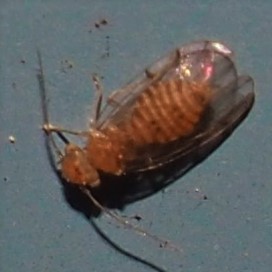
On the North side, some of the things that looked like little rocks on the siding are starting to look like possible nymphs. Here are some of the most cheerful clues. In picture 3, look at the little figure near the bottom left, which seems to be carrying a bunch of egg-like things. I don't swear to any of these things, but they do make me feel hopeful.
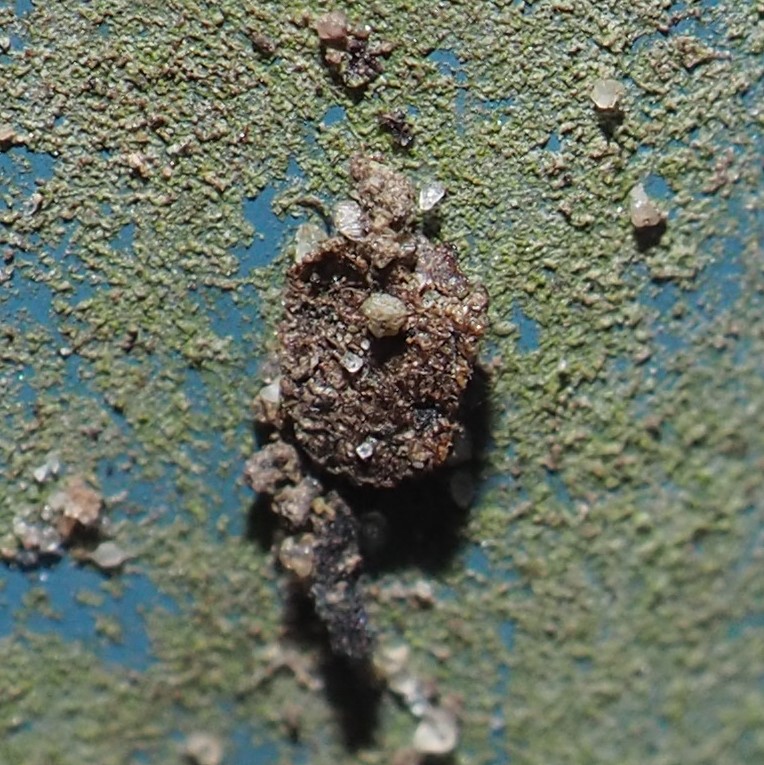
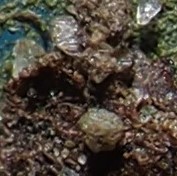
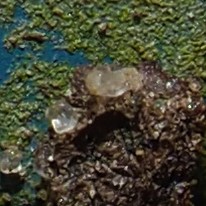
There were some very pretty Beetles out there this week. Pretty, as in number 1; interesting, as in number 2. Third may be a Click Beetle - look at that deeply hinged edge between thorax and abdomen.
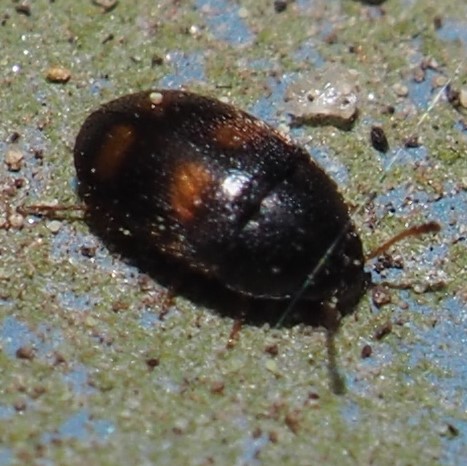
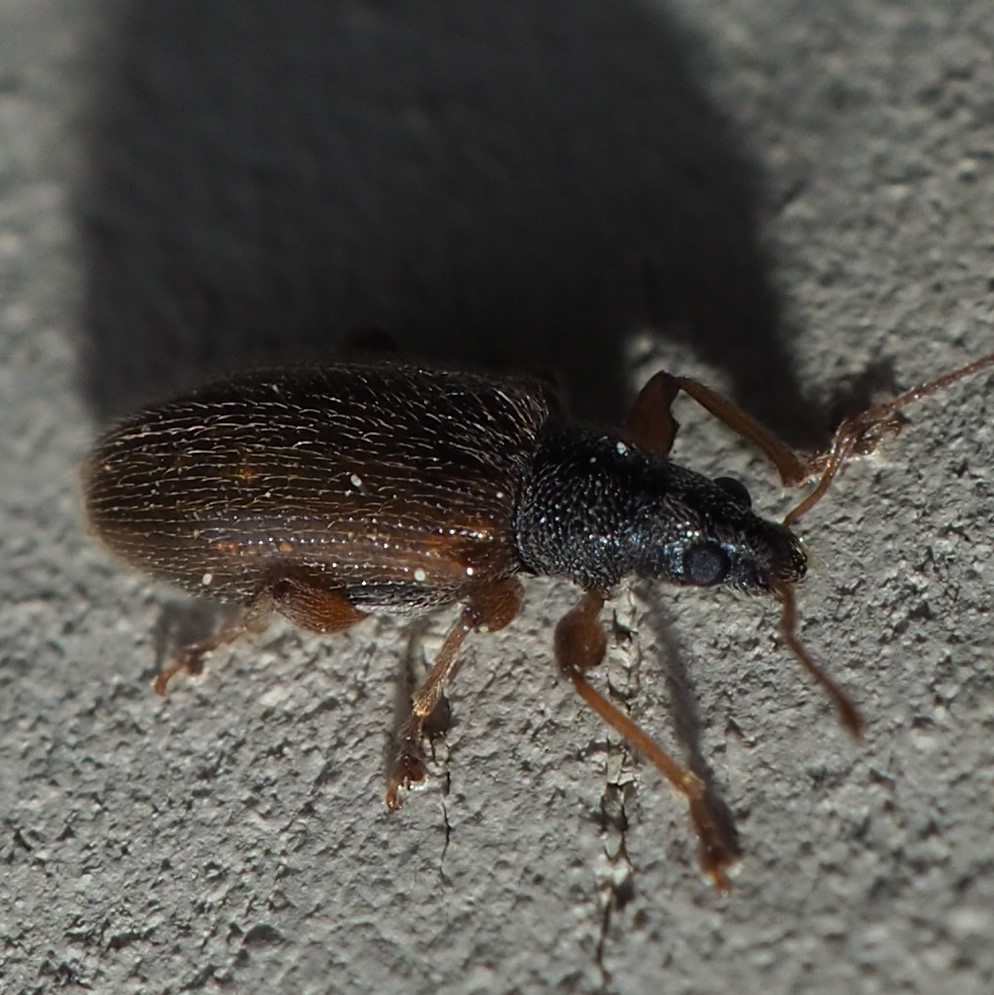
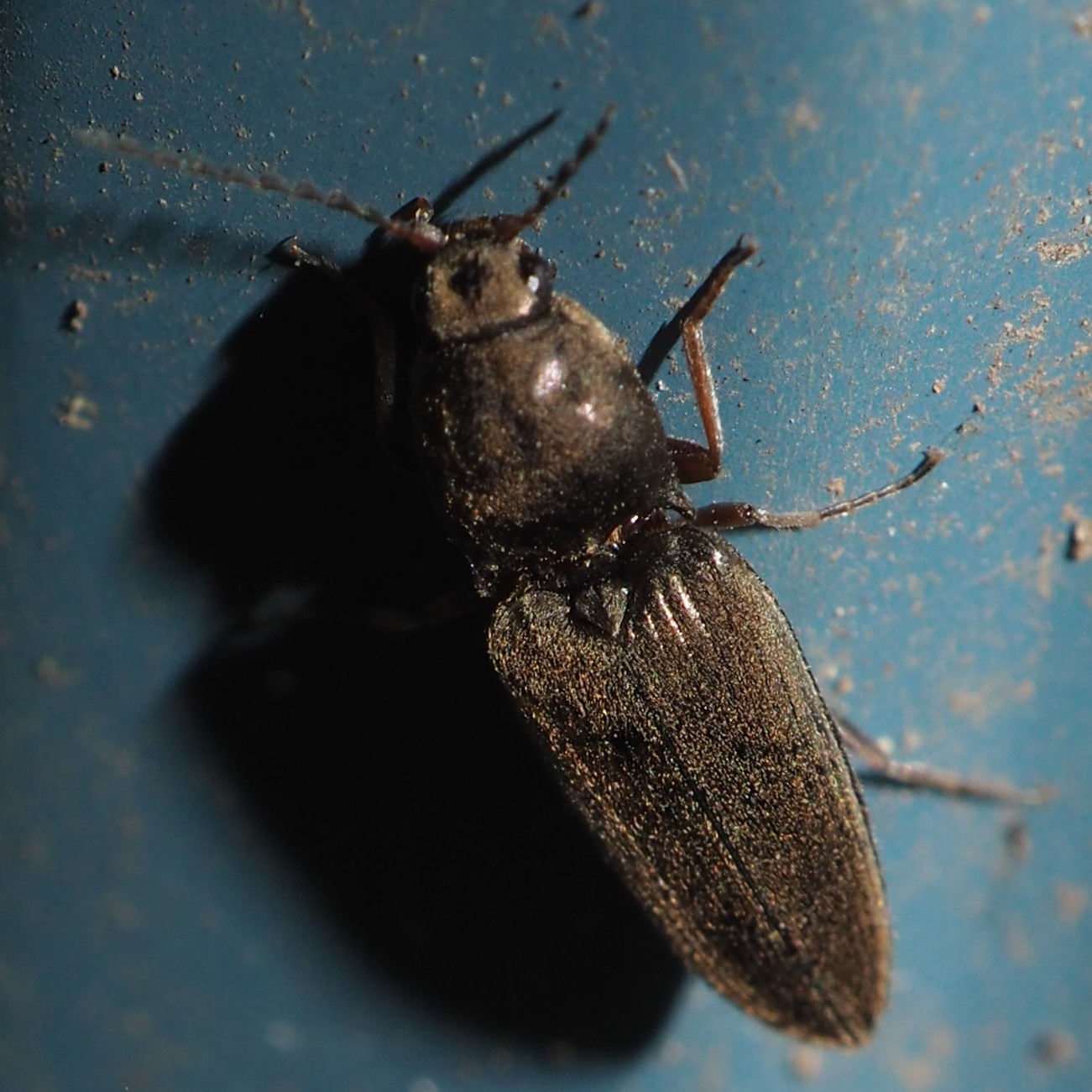
My Cousin Renee Bertman-Hilton found this Eyed Click Beetle on the side of the road as she drove through South Carolina. Those "eyes" are NOT real eyes, but spots that have developed through natural selection as the Beetles with the bigger "eyes" tend to survive to the next generation better than plainer customers.
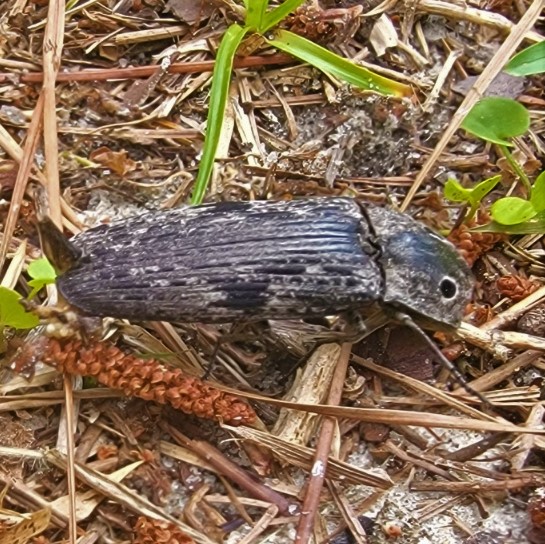
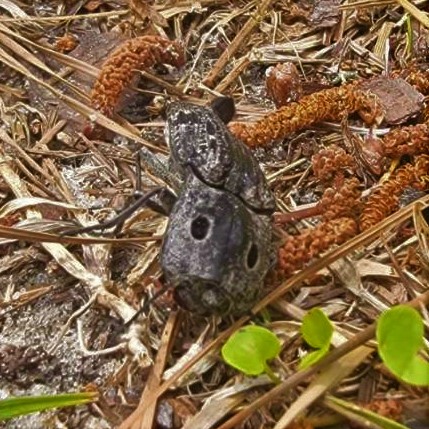
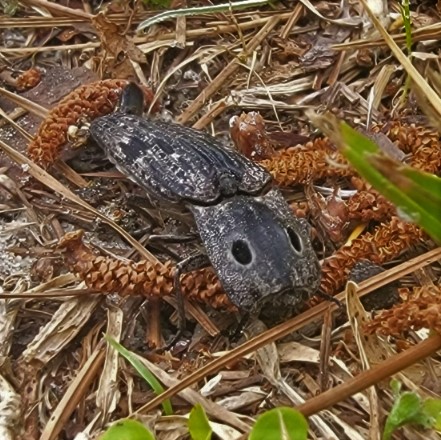
Here we have that lovely striped masterpiece of a Redbud Bruchid. I probably should mention the story of the Redbud "tree"- it's been a long time. It is actually a LEGUME, a member of the Bean Family. So its seeds grow inside a pod, like a Bean's seeds. OK, now listen up. A Bruchid is a Weevil that lives inside a pod and eats the soft baby seeds! (Thank you for letting me pedantize.) Number 2 is probably a Rove Beetle, since its hard outer wings don't seem to quite cover the soft flying wings.
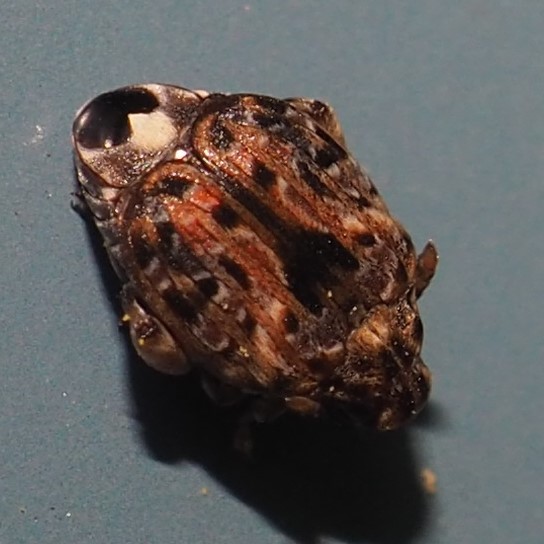
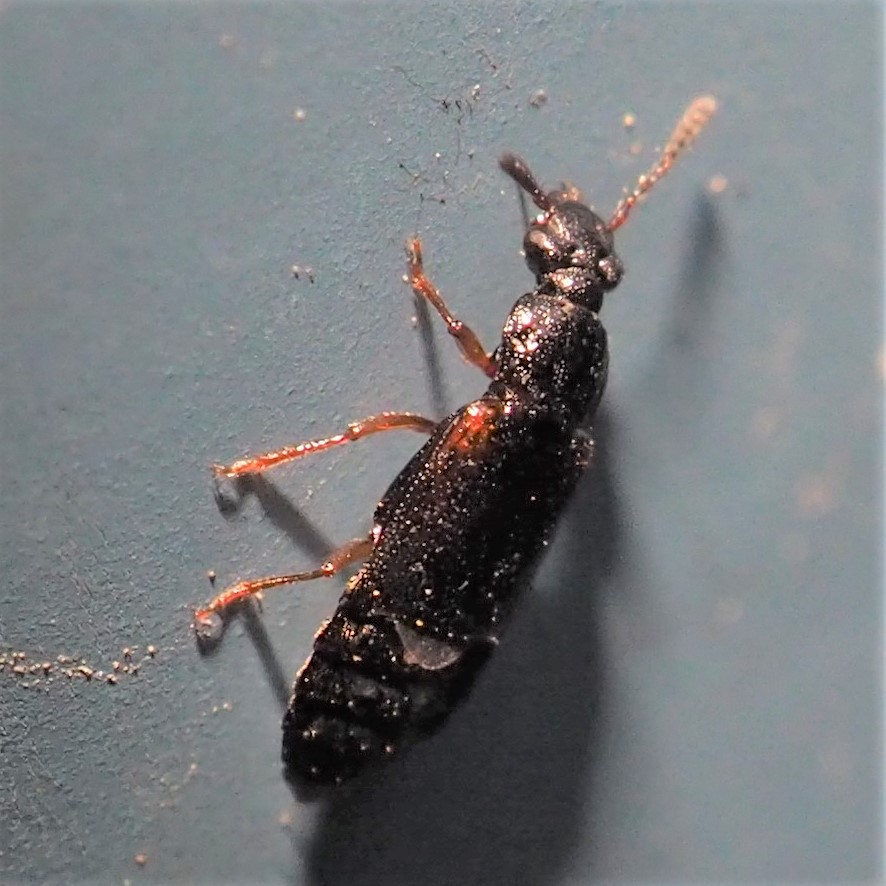
Our old friend, Drymus unus, the fellow with no common name - too dignified for that, I suppose. And one of the easier to name Stink Bugs, the Twice-stabbed Stink Bug. And one Leafhopper, our other old friend, Erasmoneura vulnerata.
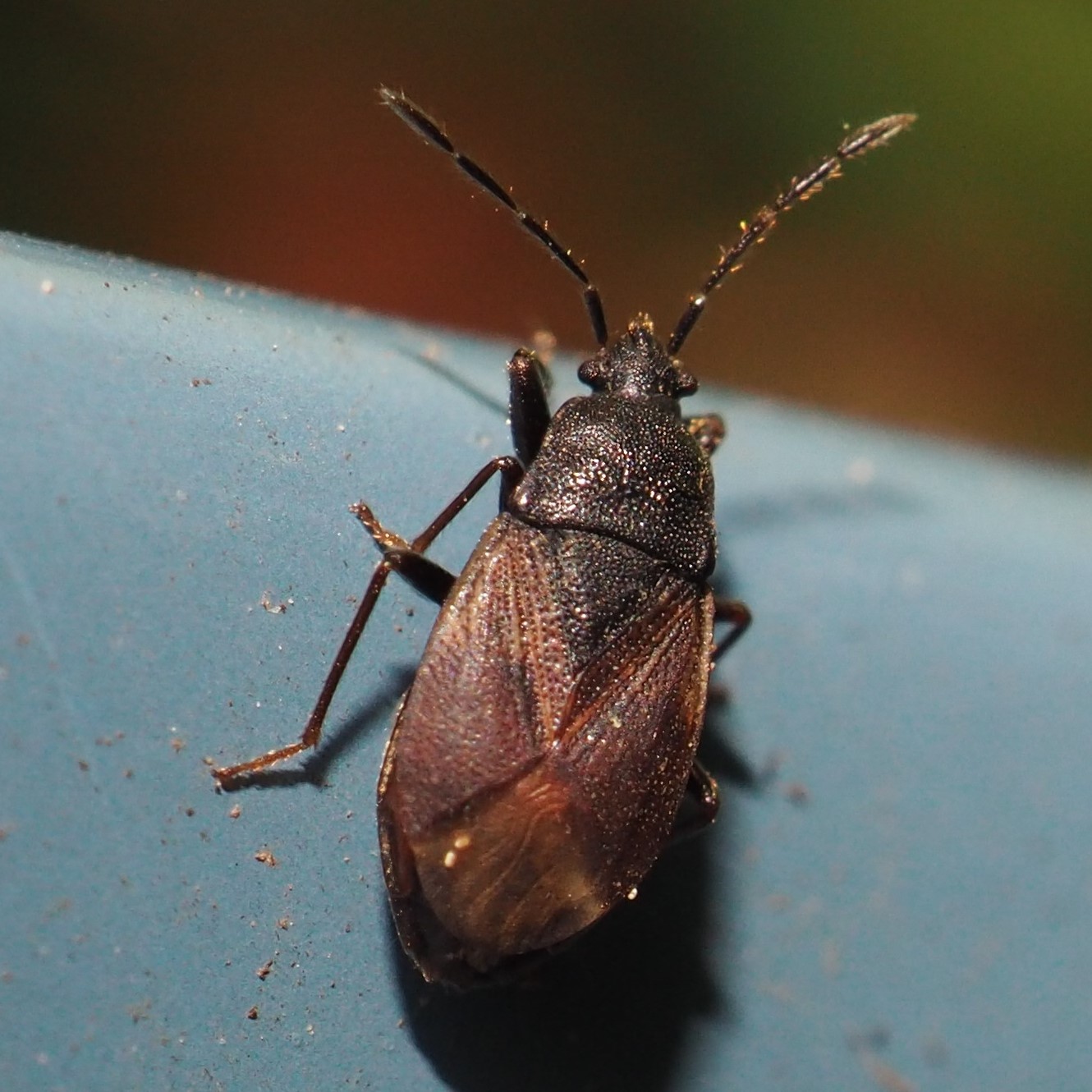


I'm always puzzled as to whether to group the caterpillars and the moths together or as the stage they are being seen as. Here is the Cutworm larva we saw last week and the Gypsy Moth caterpillar. We do more often see them in the larval stage.. This week, even though there weren't any big Gypsy Moth caterpillar webs, there sure were a lot of the little hairy black larvae. Both of these caterpillars kept the Spiders very happy and full. I will now skip till after the Flies to show the Moths, the adult-staged forms.
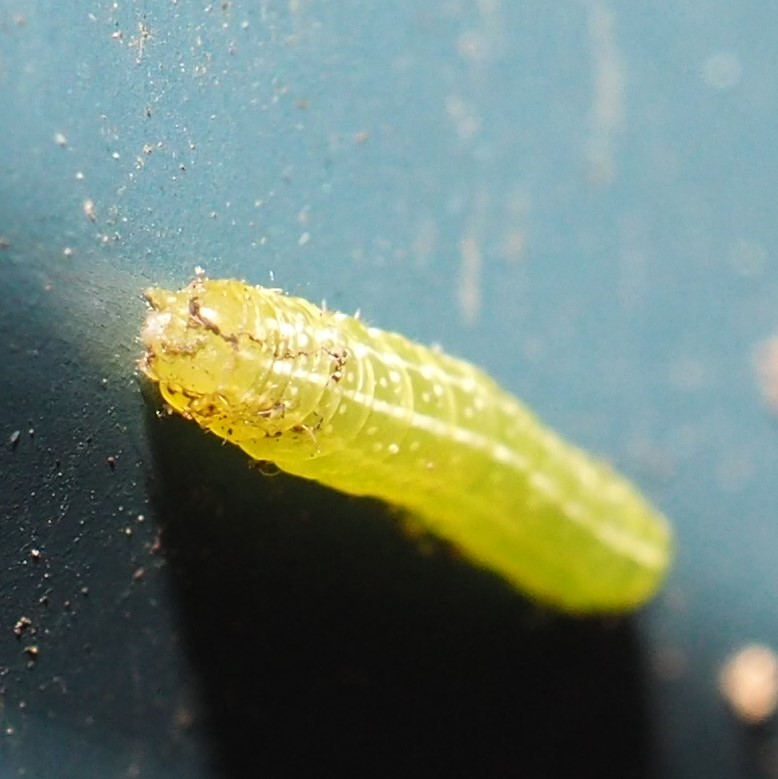

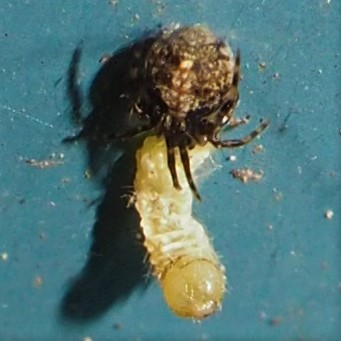
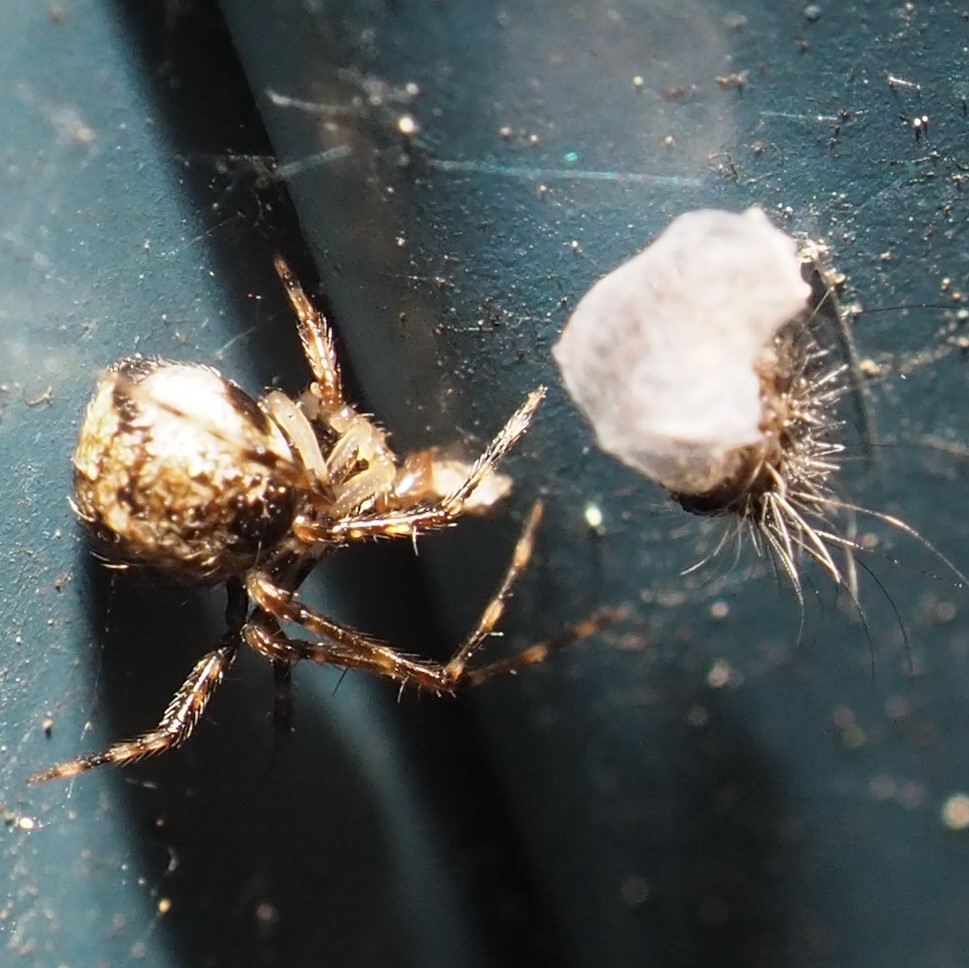
I didn't get too many fish pictures. But here is one of the Mother of the Clan, Chica, snacking on fish flakes. And this picture shows three red fish swimming in the green trees above. I love imagining this scene!
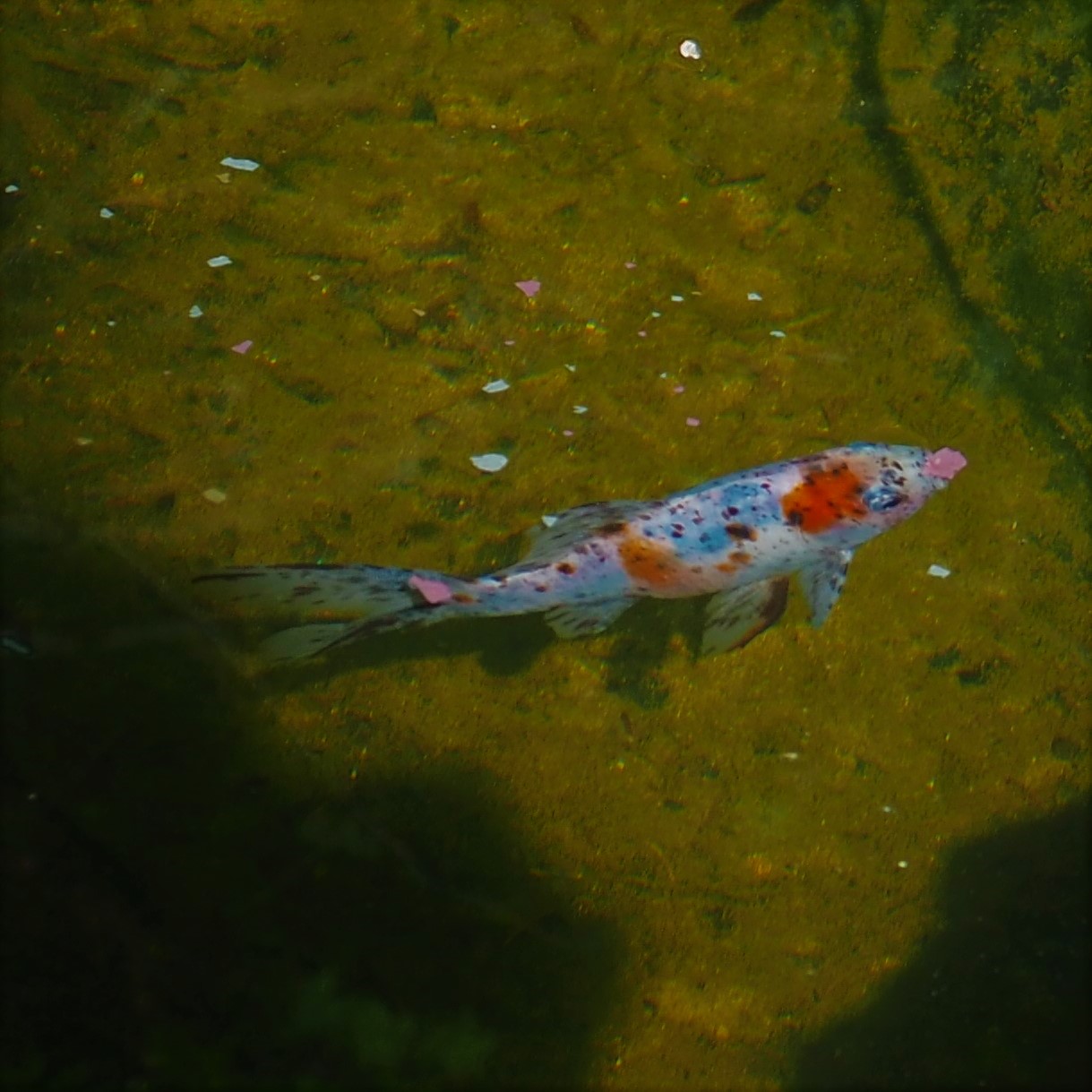
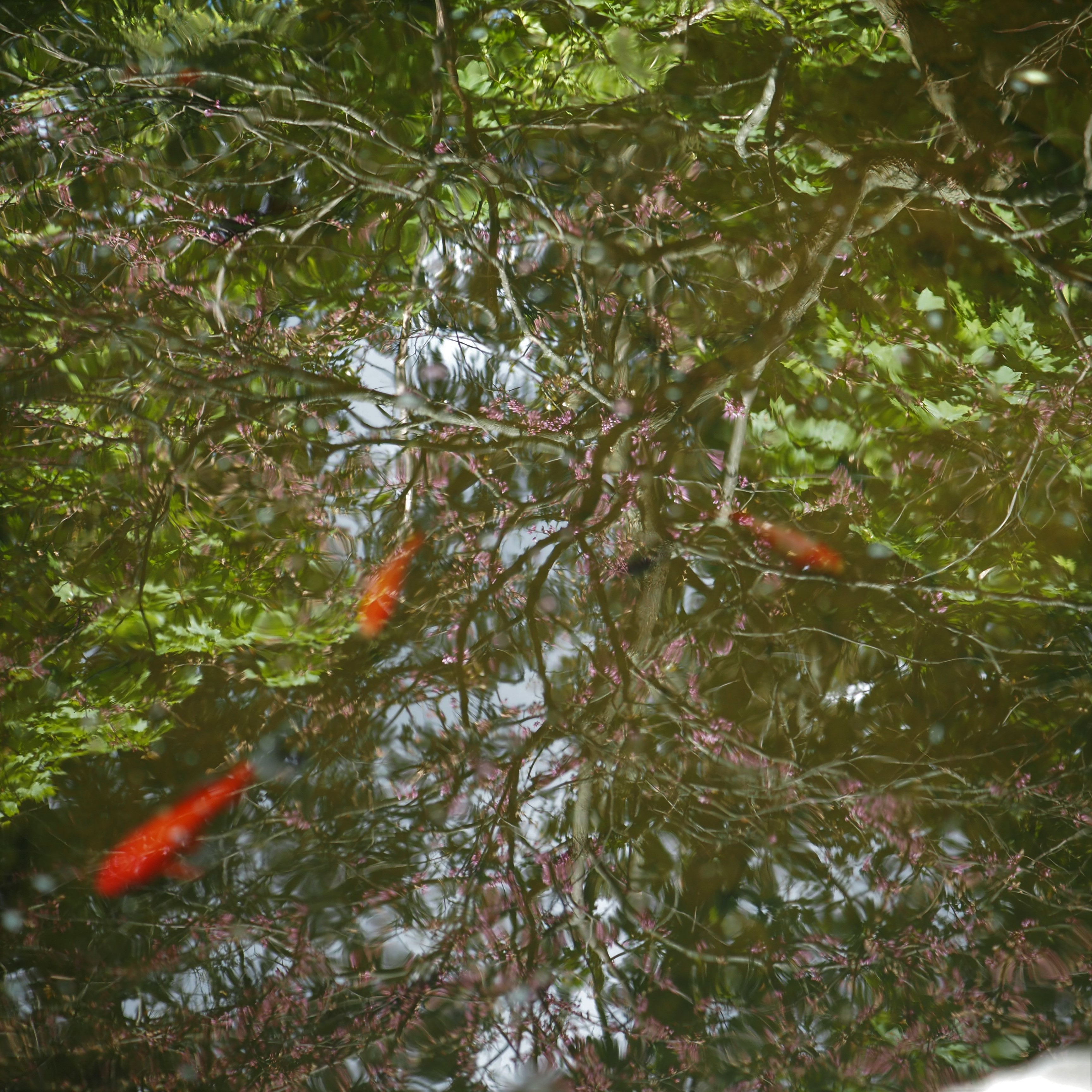
And on to the Flies! Here is a repeat visit of Bibio femoratus, which I seem to recall having an alternative name, Love Bug, in some parts of the South. The other night, while I was watching my favorite program, Death in Paradise, the murder turned out to have been committed by exposing the victim to the bite of the Love Bug. I may have this wrong. The Bug did not look at all like B. femoratus. Second is a Crane Fly that we see a lot these days. The third Fly is probably one of the Greenbottles.
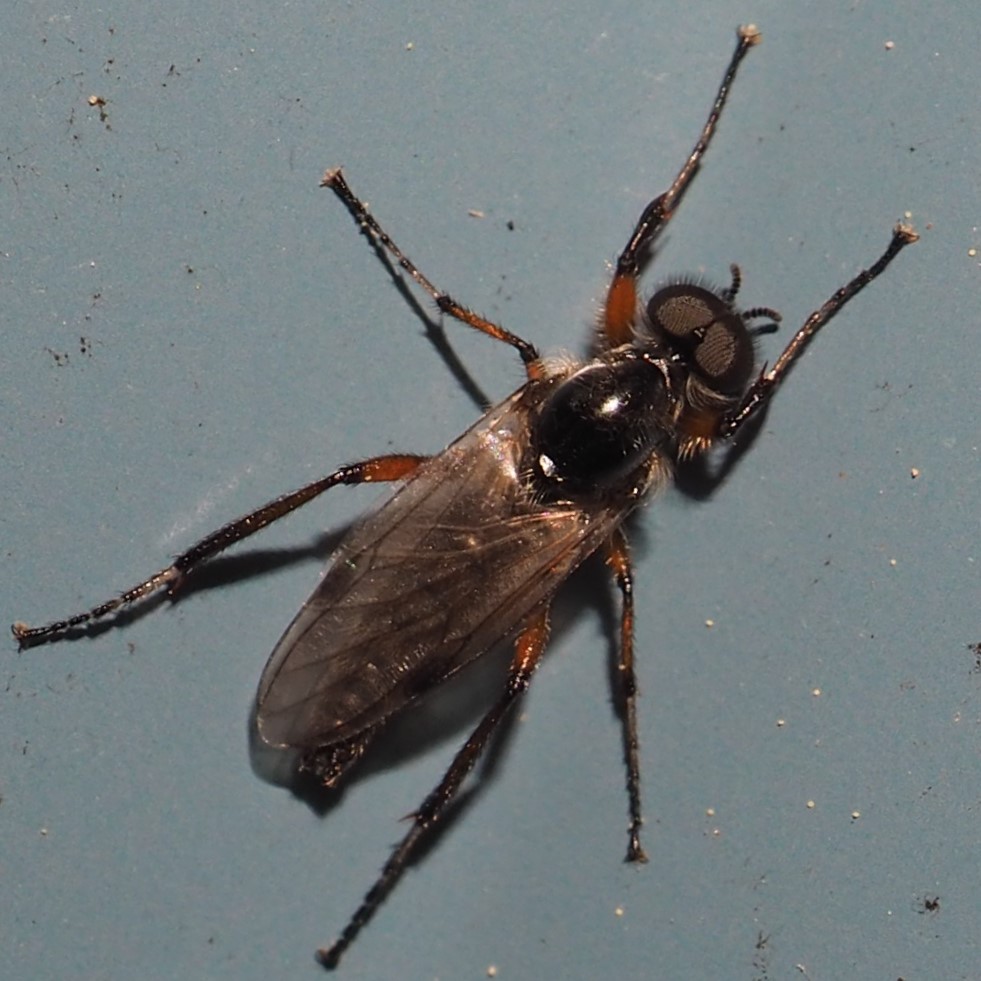
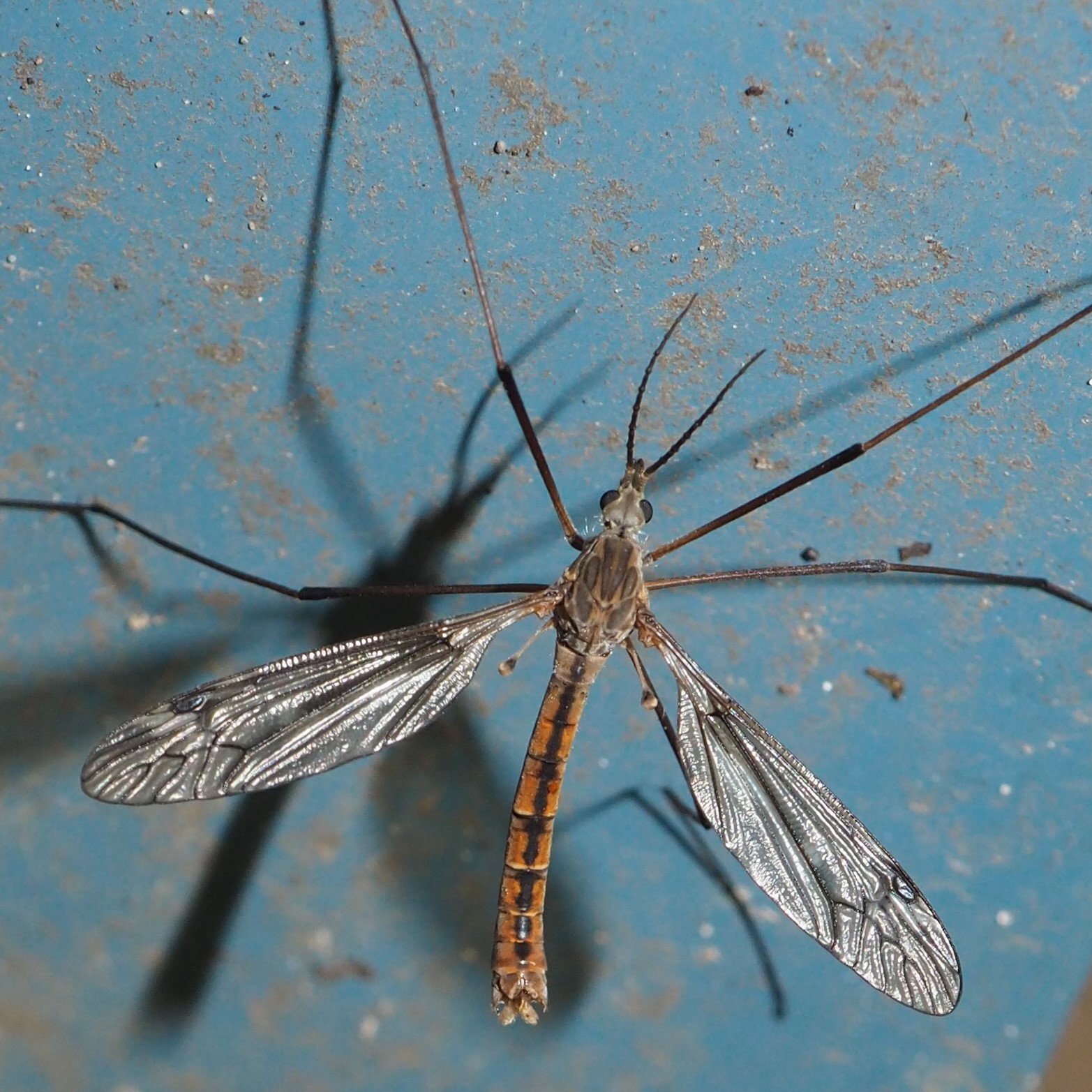
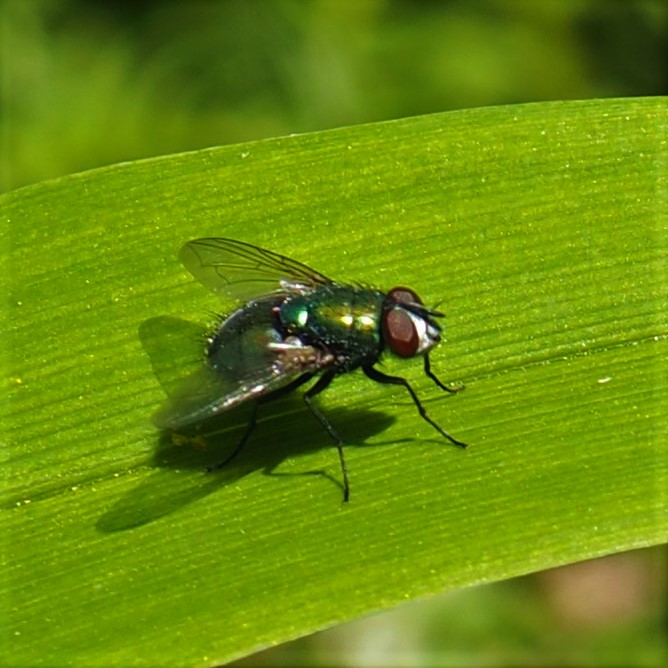
This gorgeous Fly is one of the Amoena genus of Vinegar Flies. I don't make up the names, you know.. Next is a Fly that looks like a Moth, hence a Moth Fly. Third is in the shade under a very green Lily Leaf, and makes the Fly seem bluish.
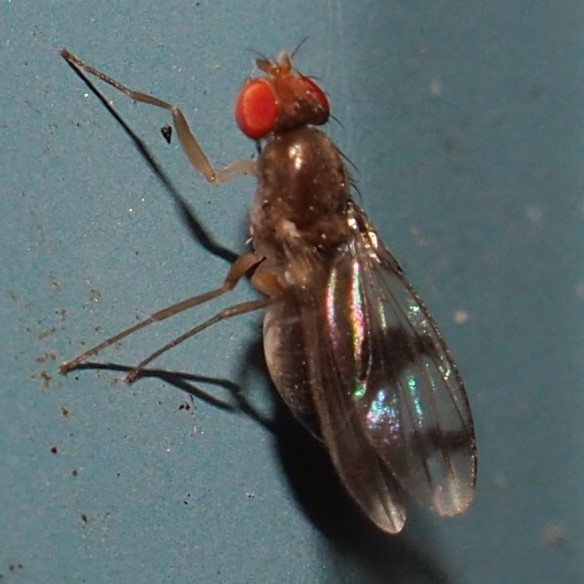
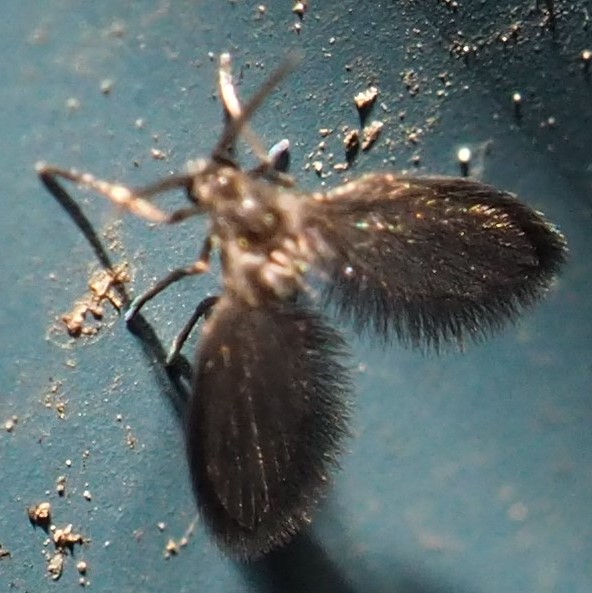
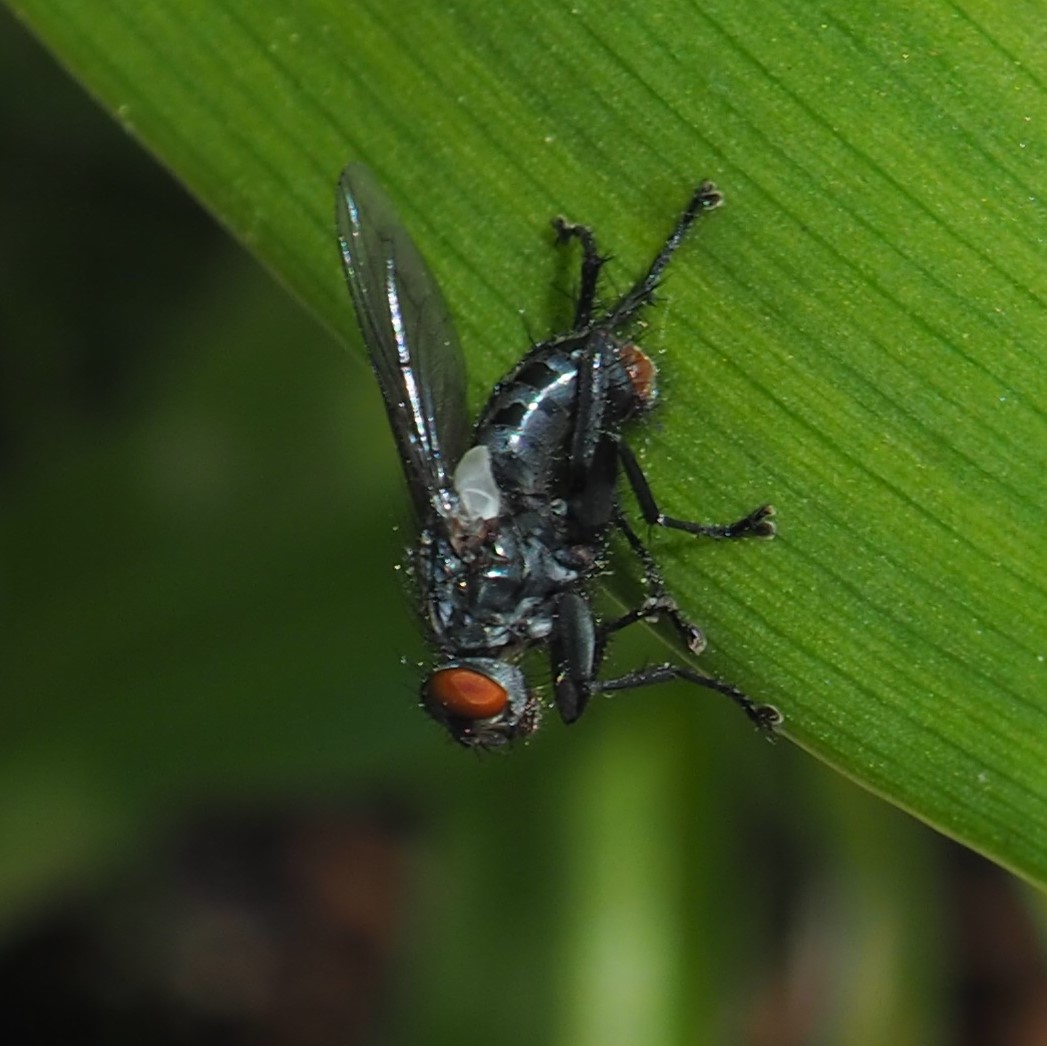
A beautiful red-eyed Fly; a tiny fly, probably a Non-biting Midge. And a Mystery Fly, which seems to be sporting only one wing.
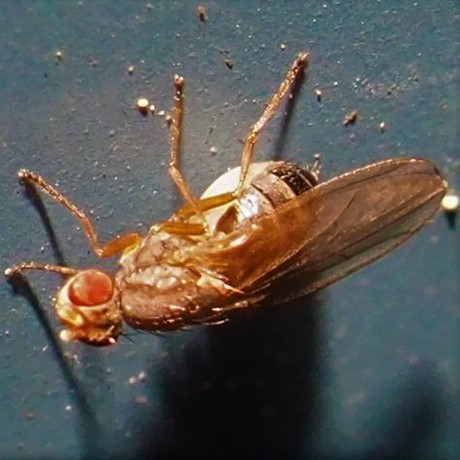
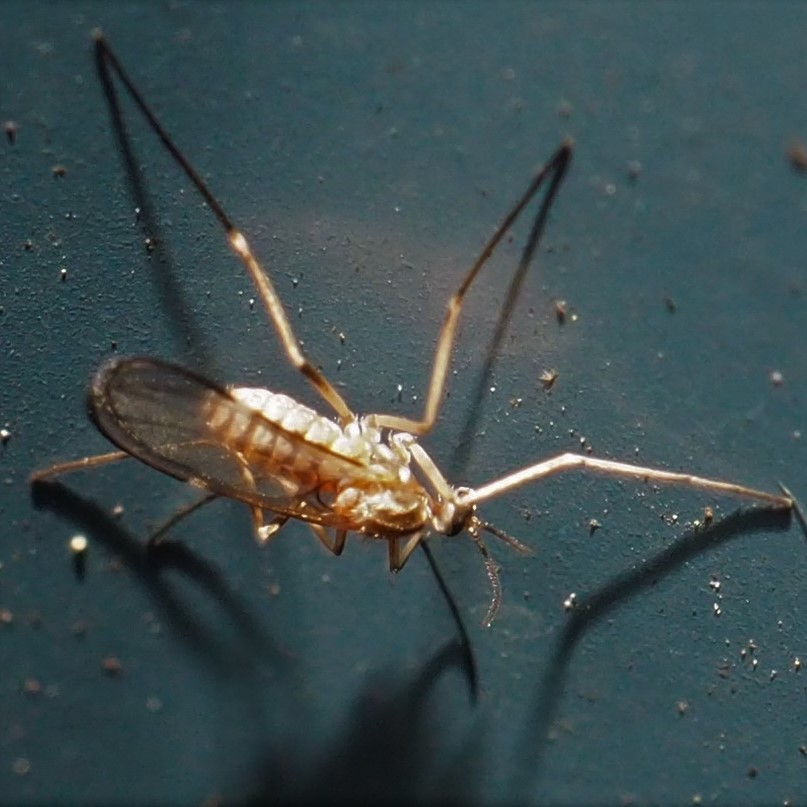
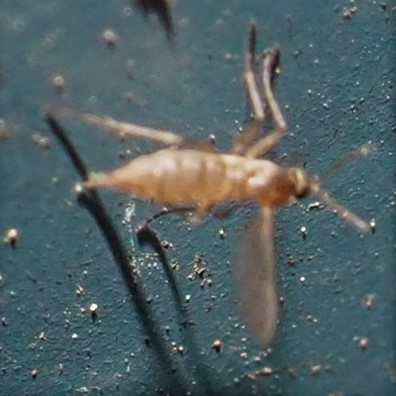
This is probably a Non-biting Midge, but I was quite taken by the pattern of light and dark in its wings.
Same for number 2. Same for number 3, and it is also quite beautiful.

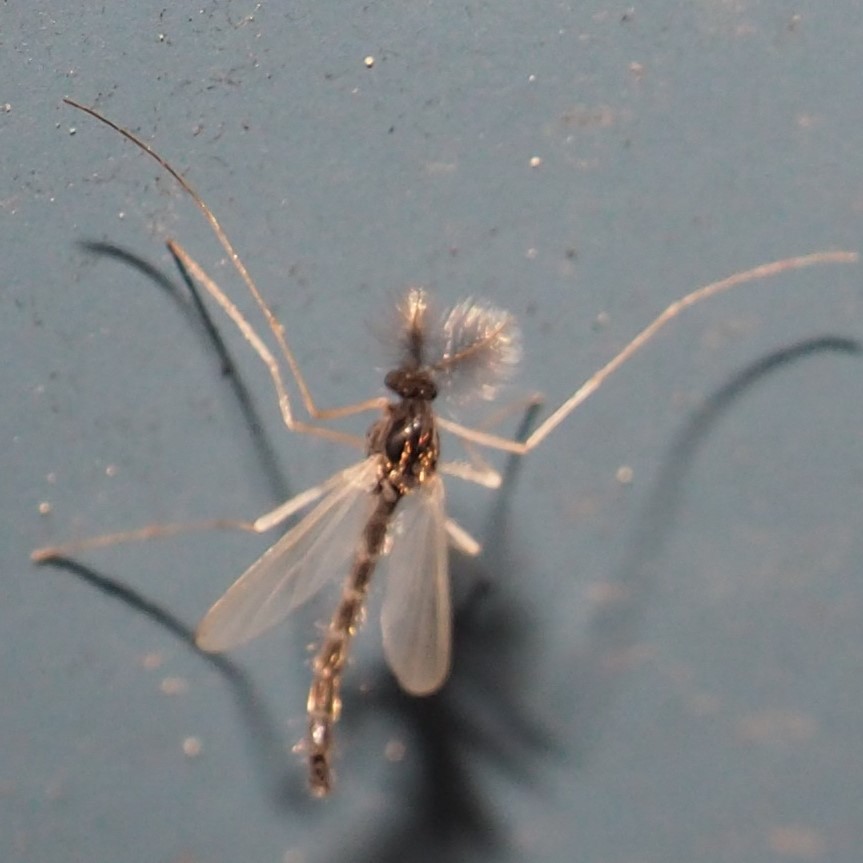
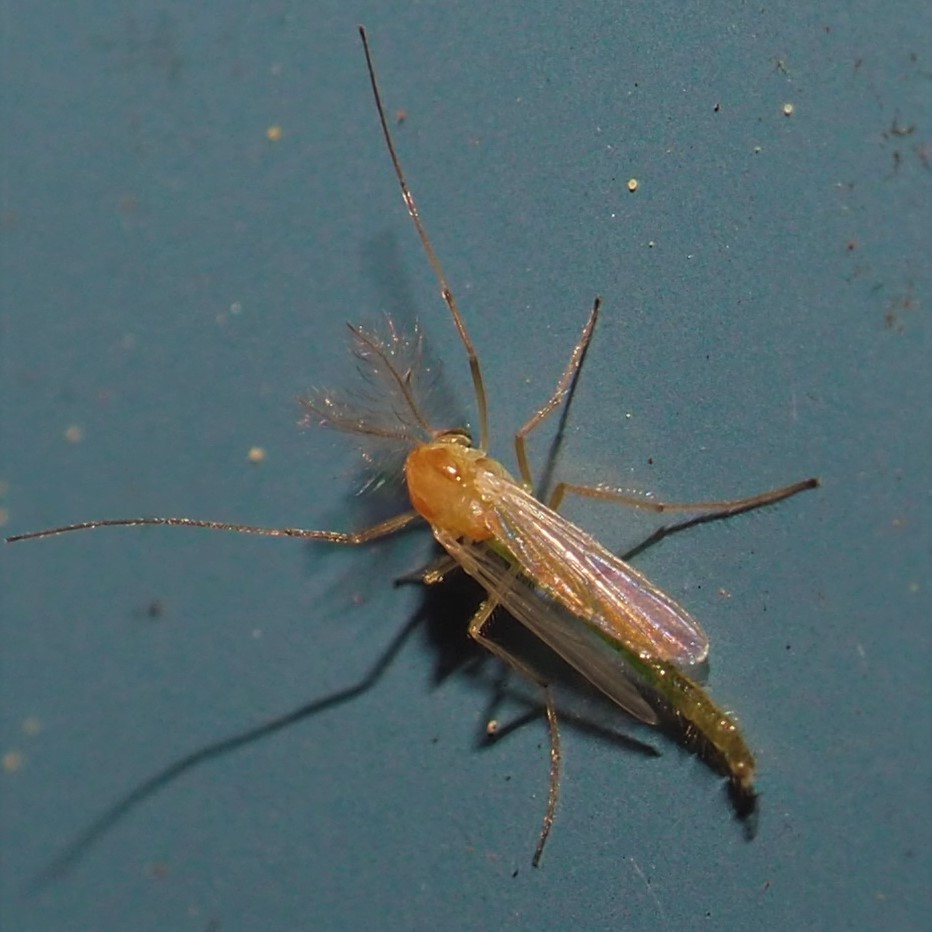
You'll be glad to know that Mosquito season has rolled in. I've sent these pictures off to Liam Wolff, @ospr3y of iNat, but he hasn't been available for a few days. I'm pretty sure this first one is an Asian Bush Mosquito. Second is probably a member of genus Culex. And probably the same for number 3.

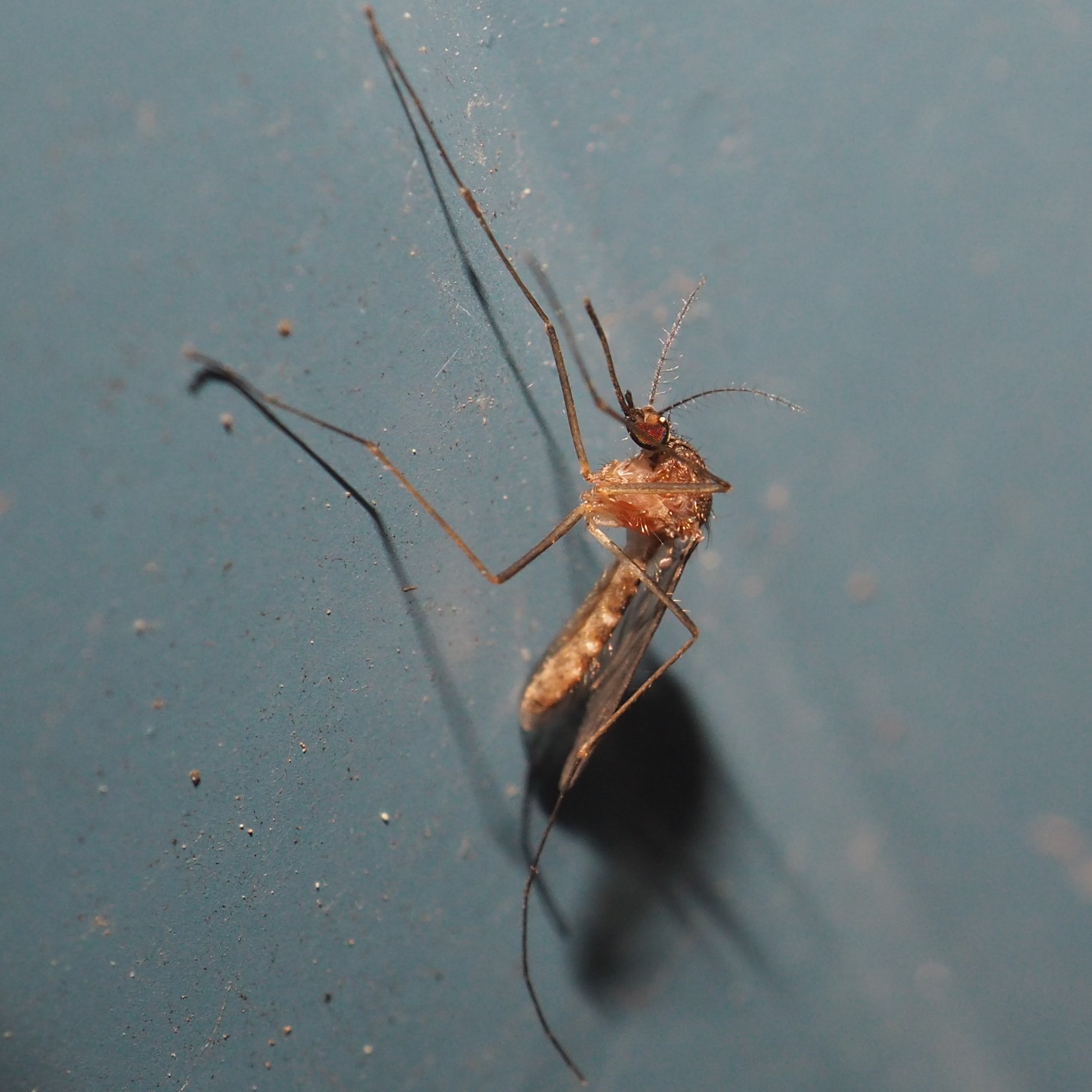

Back to the Moths. There were a number of actual Moths, like this colorful one, the Pygmy Eye-capped Moth. A white (probable) Leaf Miner and then a bright brown Calotilia Leaf Miner that we've seen quite a lot of lately. But as I was coming up the steps to re-enter the house I happened to see and ALMOST get a picture of this smallish Moth, which was mostly covered by a deep shadow. It may have a yellow collar - I have some other pictures of a little moth that is this shape! If so, this is a Yellow-collared Scape Moth!


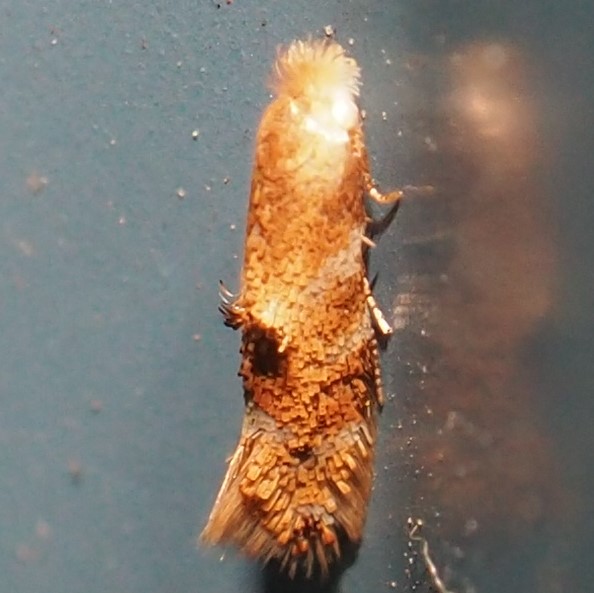

Maybe it's time for a walk in the flowers while we wait to get acquainted with the spiders. Here is a member of the Mustard family that grows right at the north-west corner of the shop. The Goldenrod hasn't grown up enough to even see over there. But on the south side there is the nicest stand of Wild Geranium I've ever seen. Just next to the Geranium is this tall yellow-green tulip that I never even noticed before. When did I plant that? I'm glad I did!
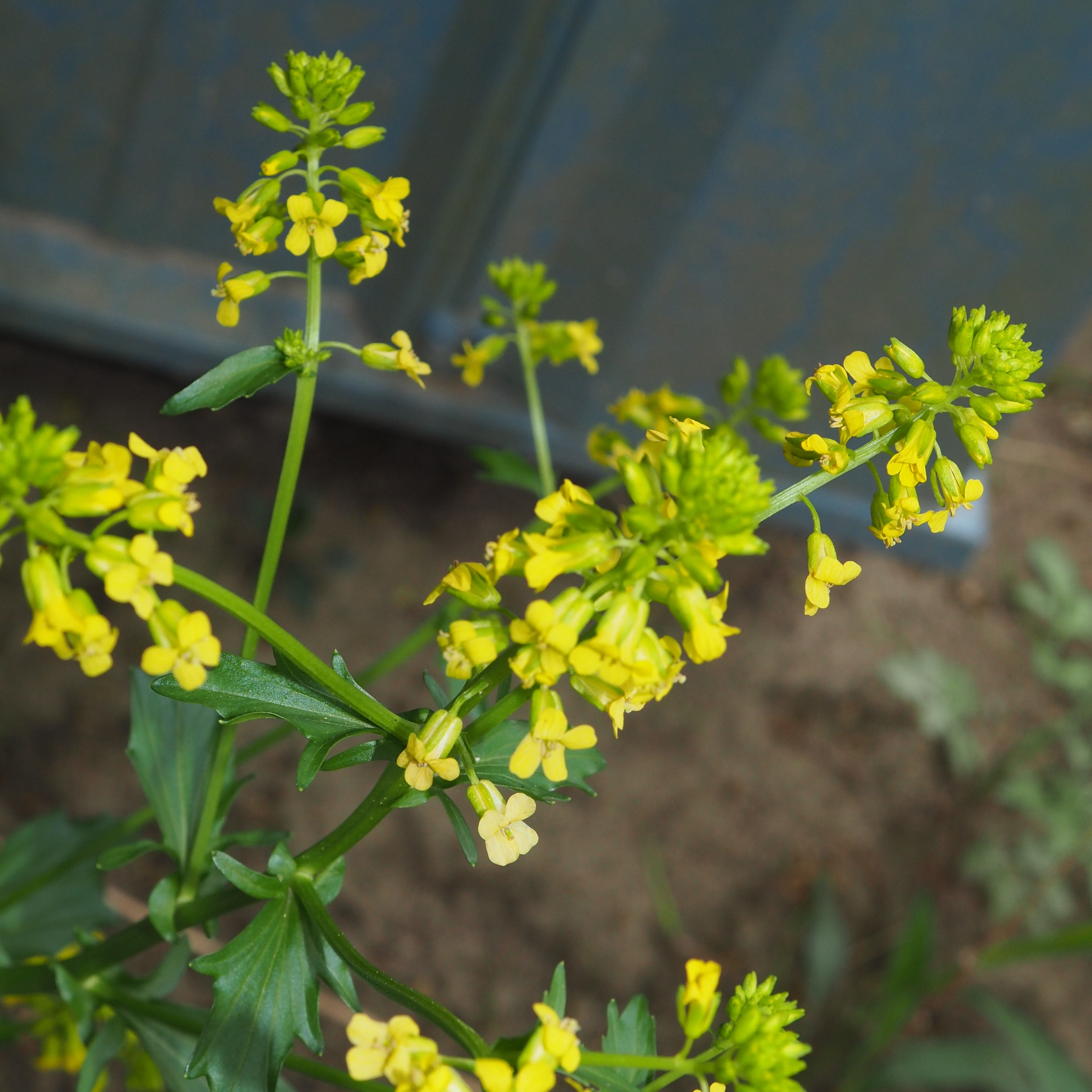
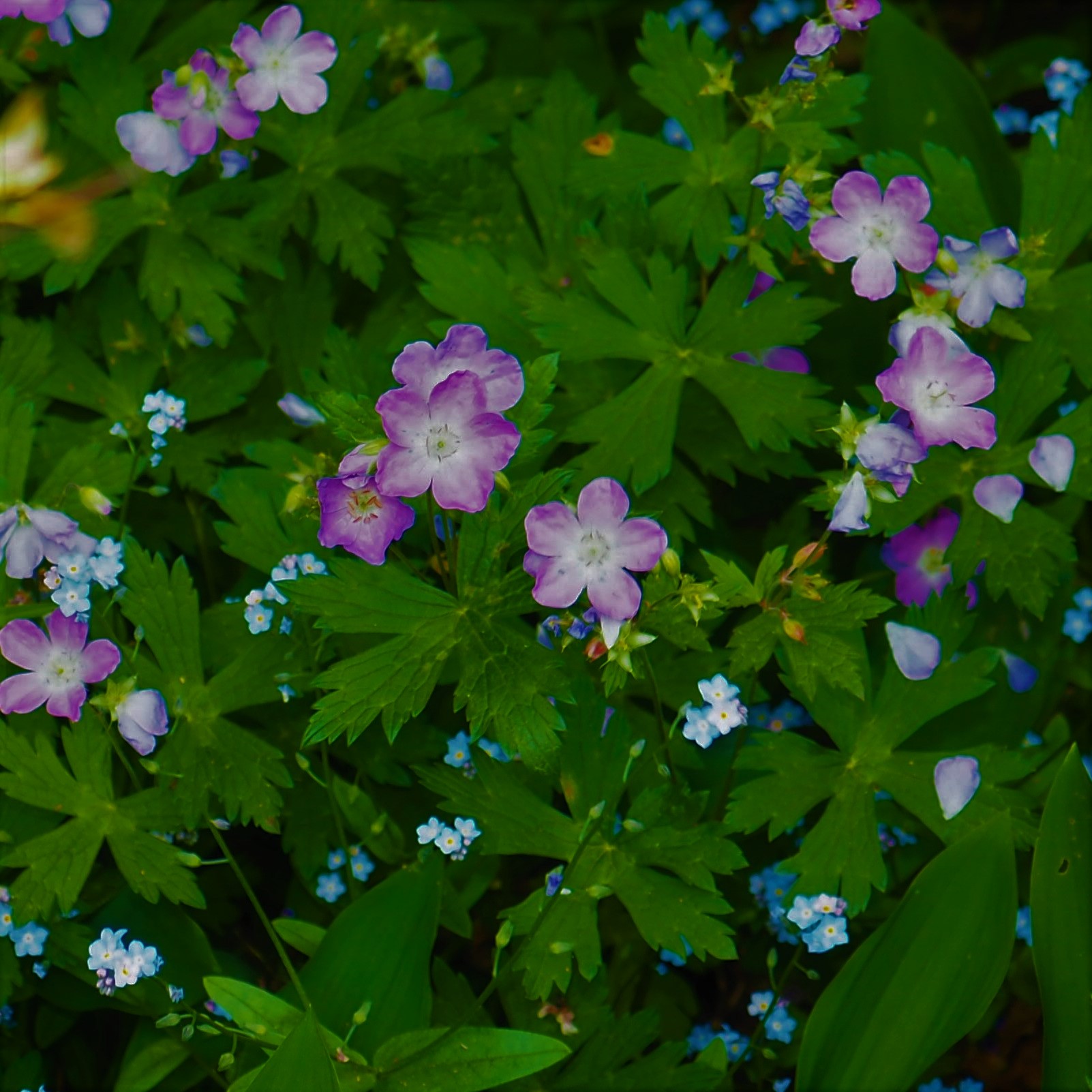
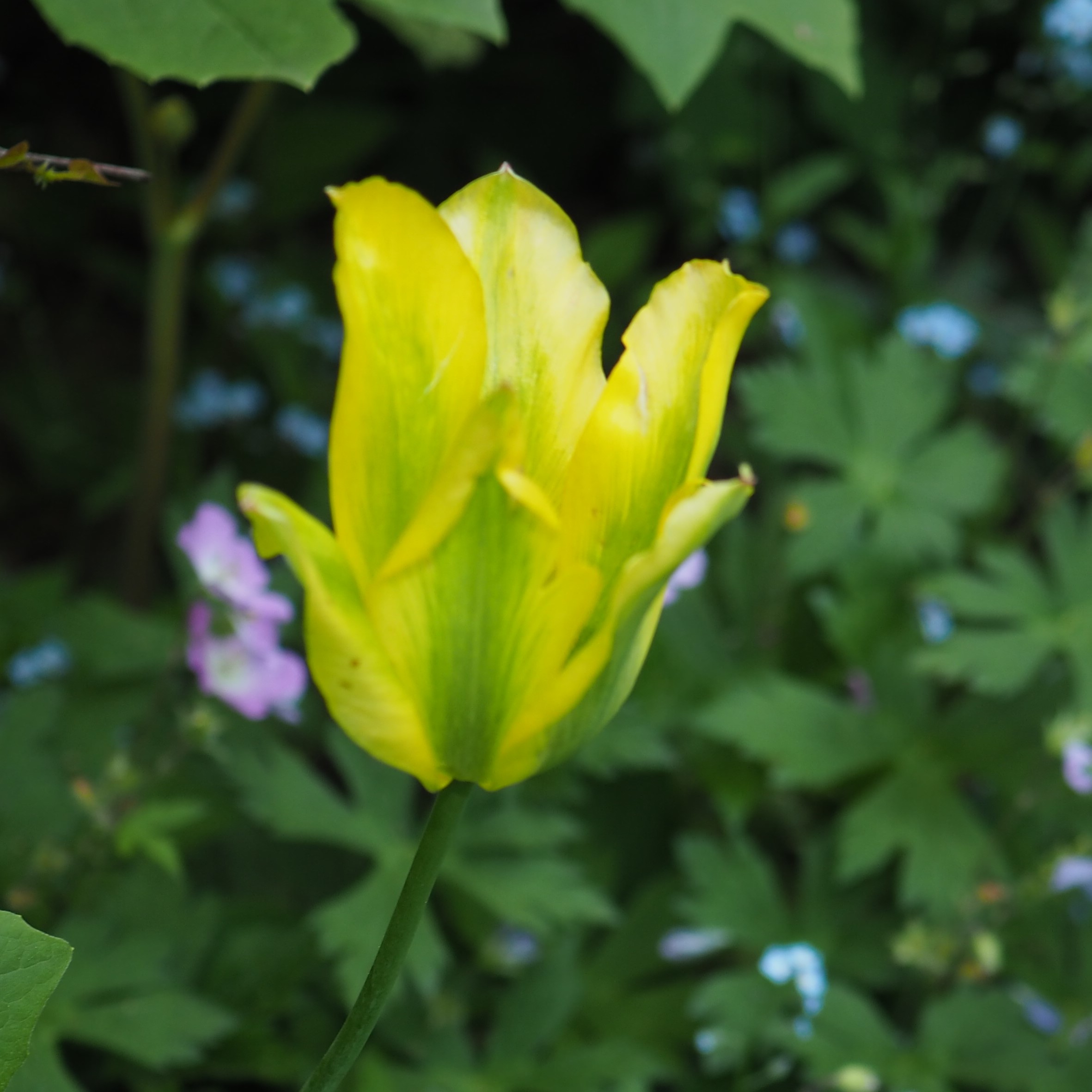
Here is that Thistle I dug up in the fall so that we'd have a place for our Keeled Treehoppers to live in the summer. And here is some of the Solomon's Seal with its many hanging flowers waiting for th Hummingbirds to visit. And out front, some Primroses and a single Celandine Poppy flower.
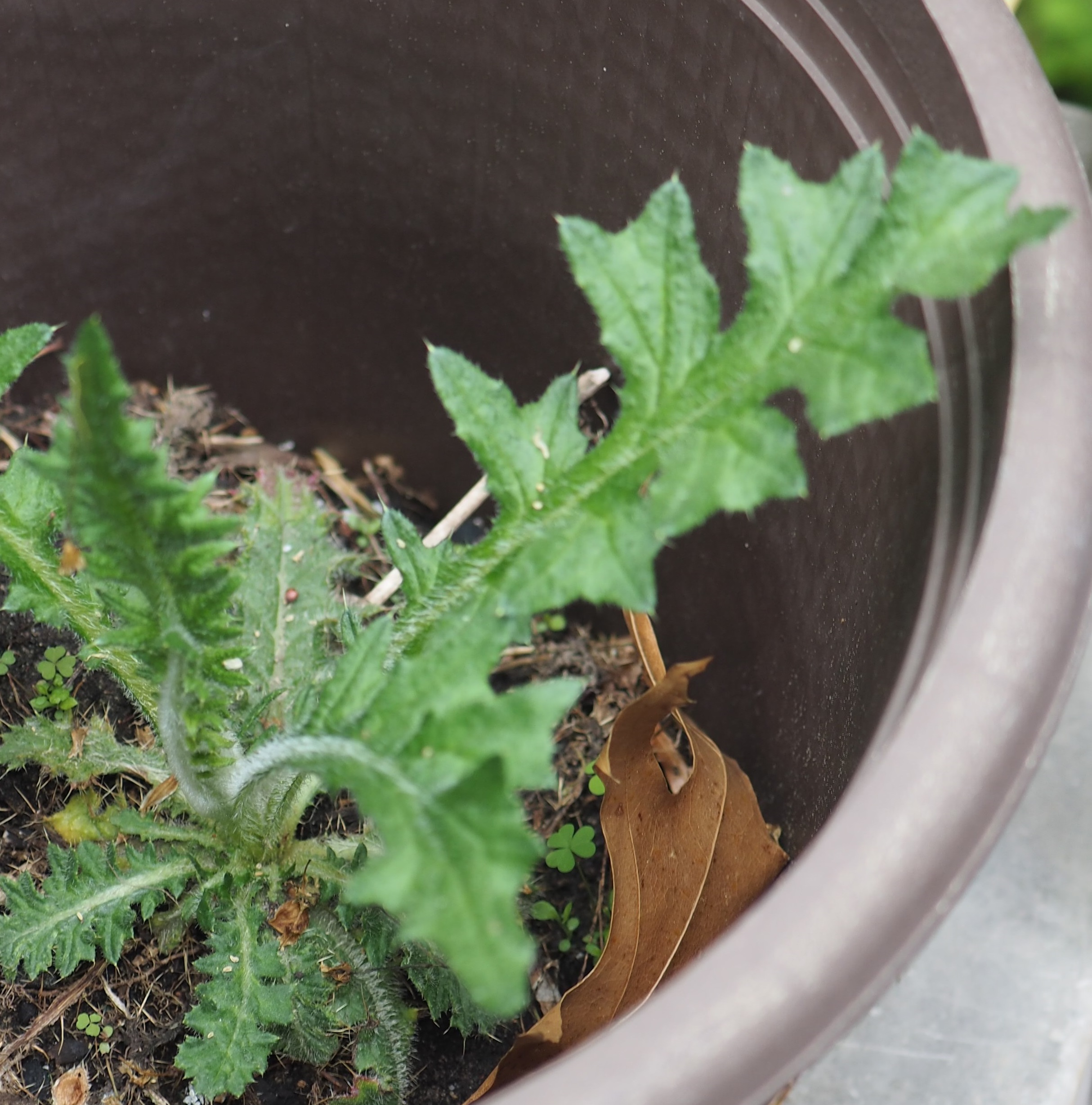


The ferns unroll their leaves little by little. And the Ajuga that I thought was lost is found. The Pinks that overwintered out on the deck are budding little by little.
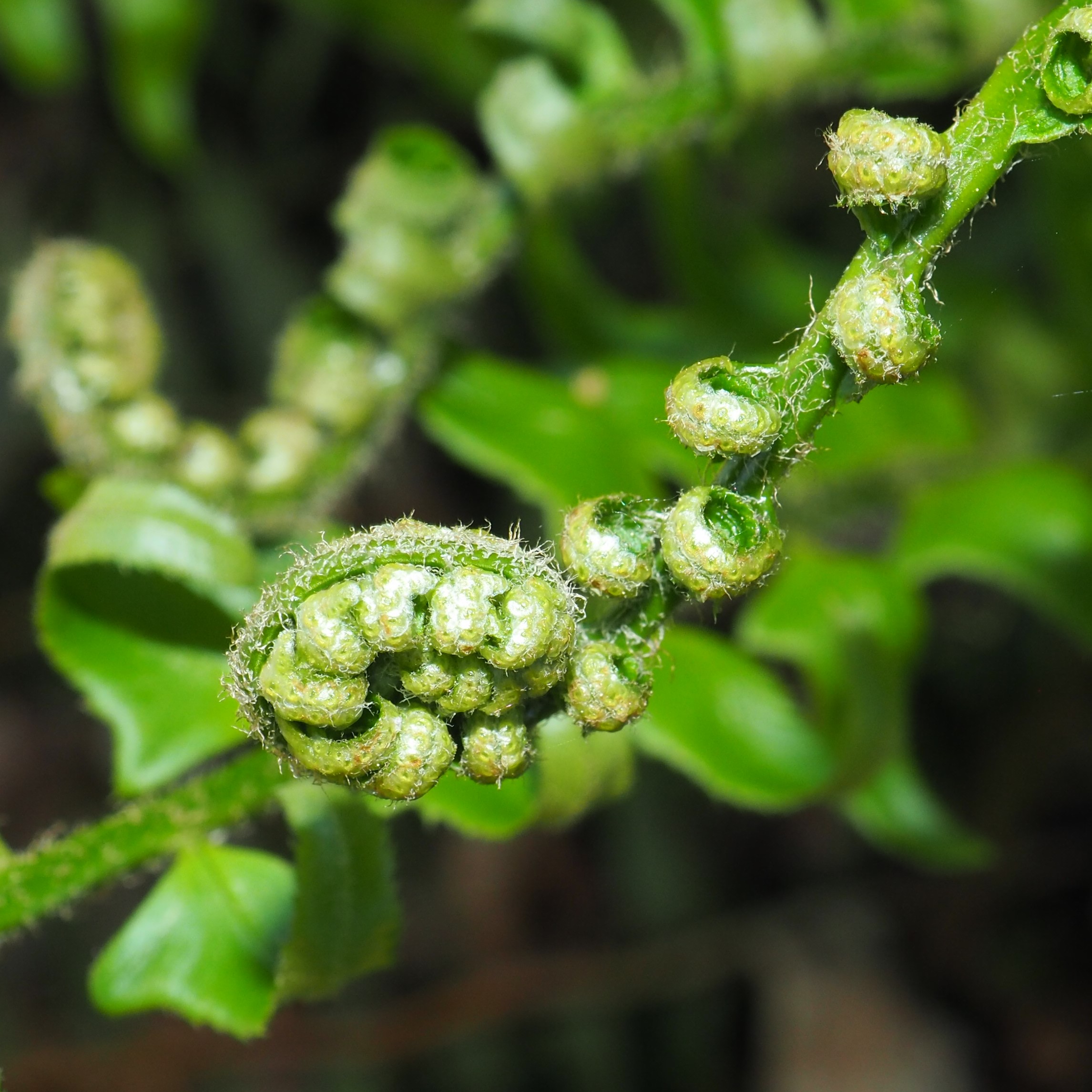
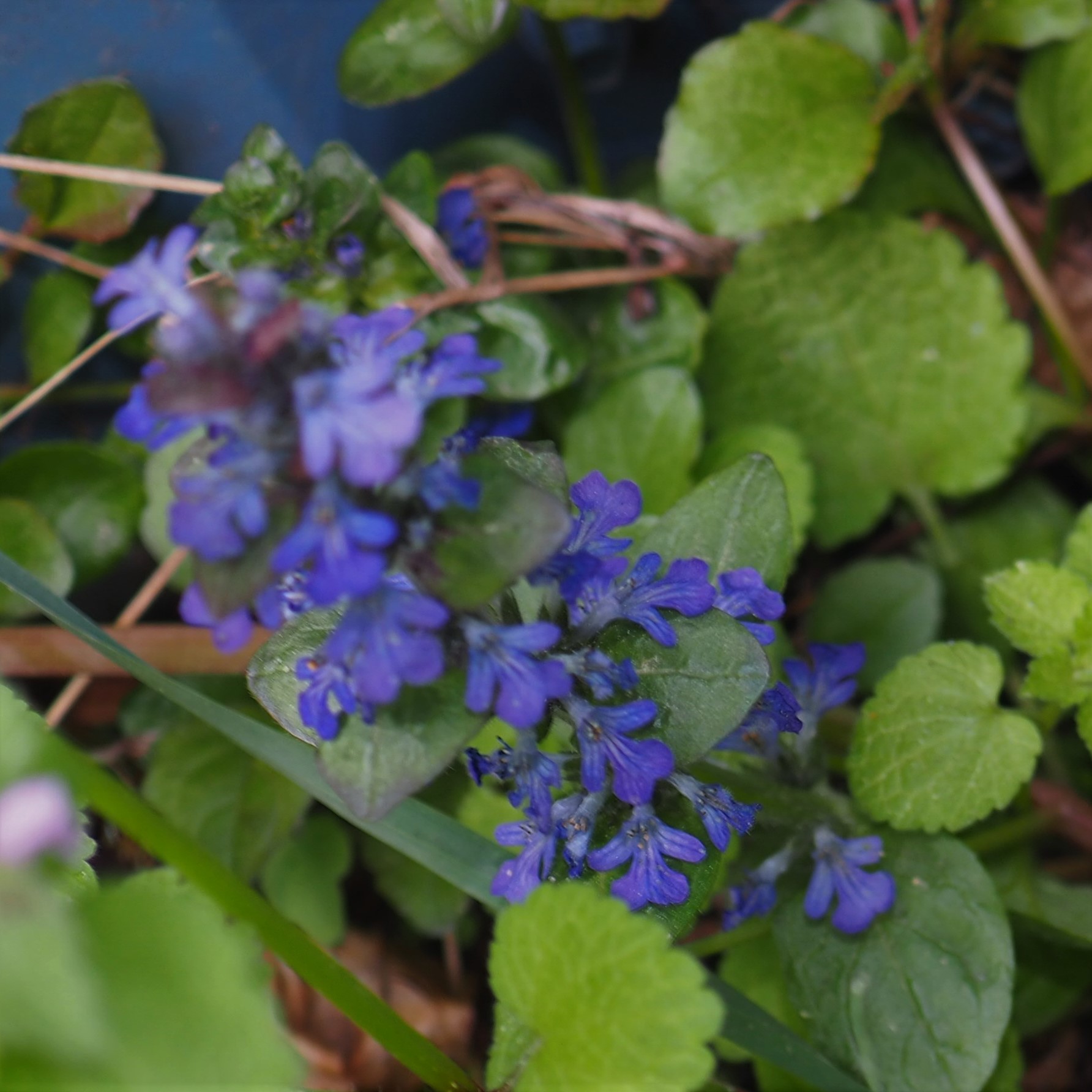
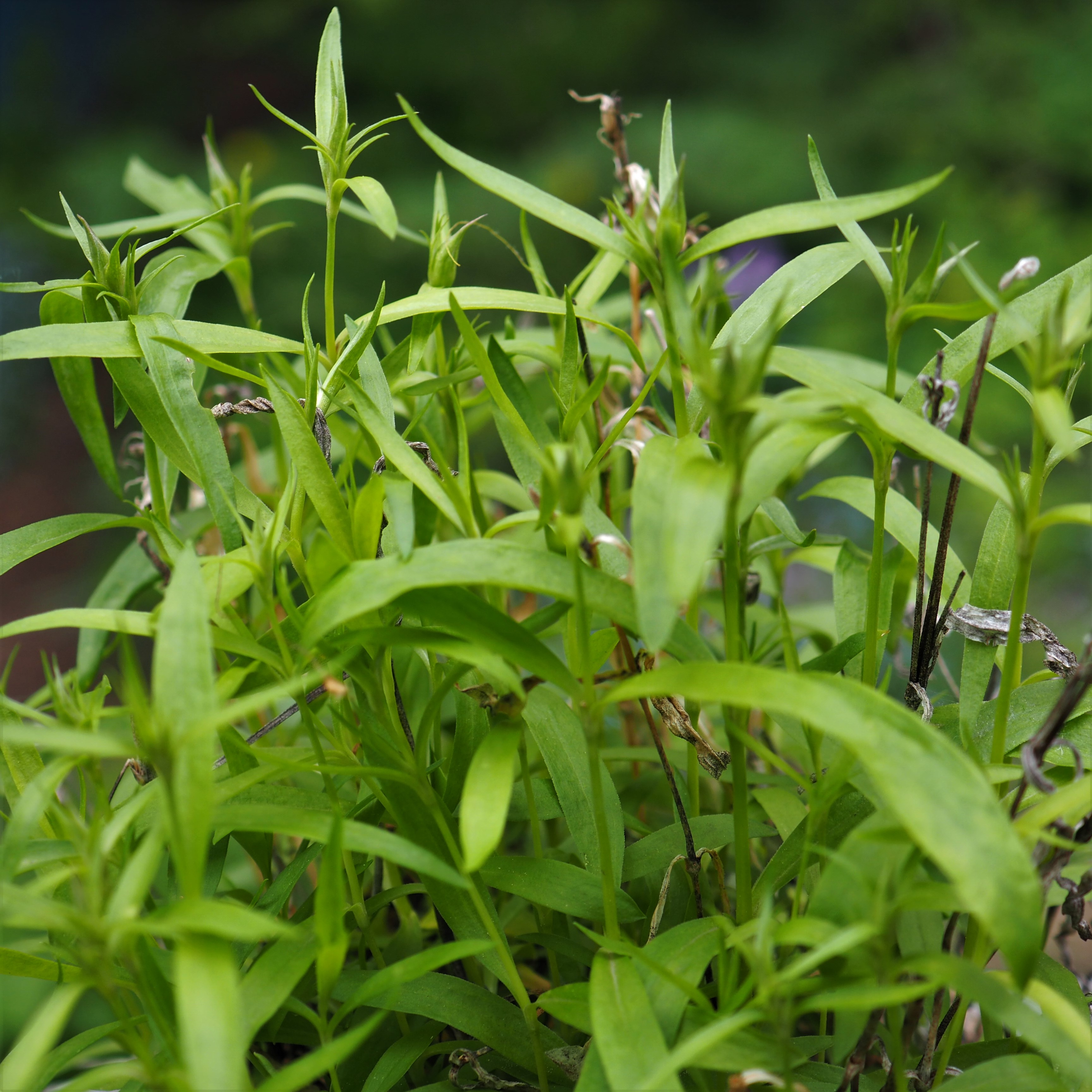
On an Aster leaf, a baby Harvestman waits for me to go away. Two Cobweb spiders are waiting for something, but what?
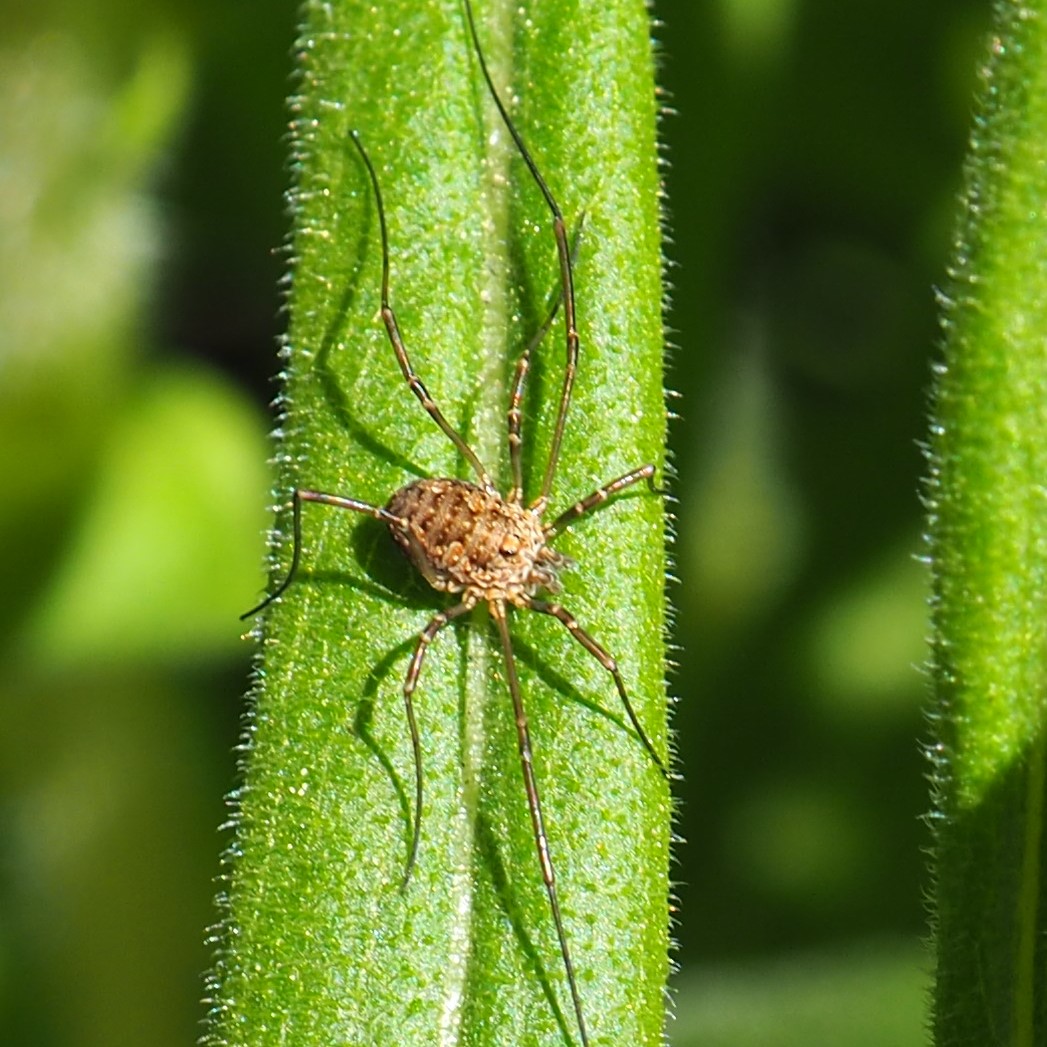

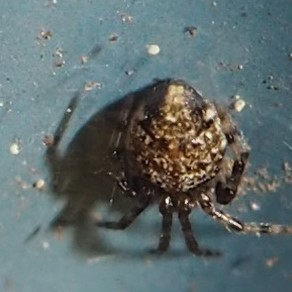
The spiders love the Gypsy Moth Caterpillars. I don't know how they make the filmy trap that will be part of their wrapping.
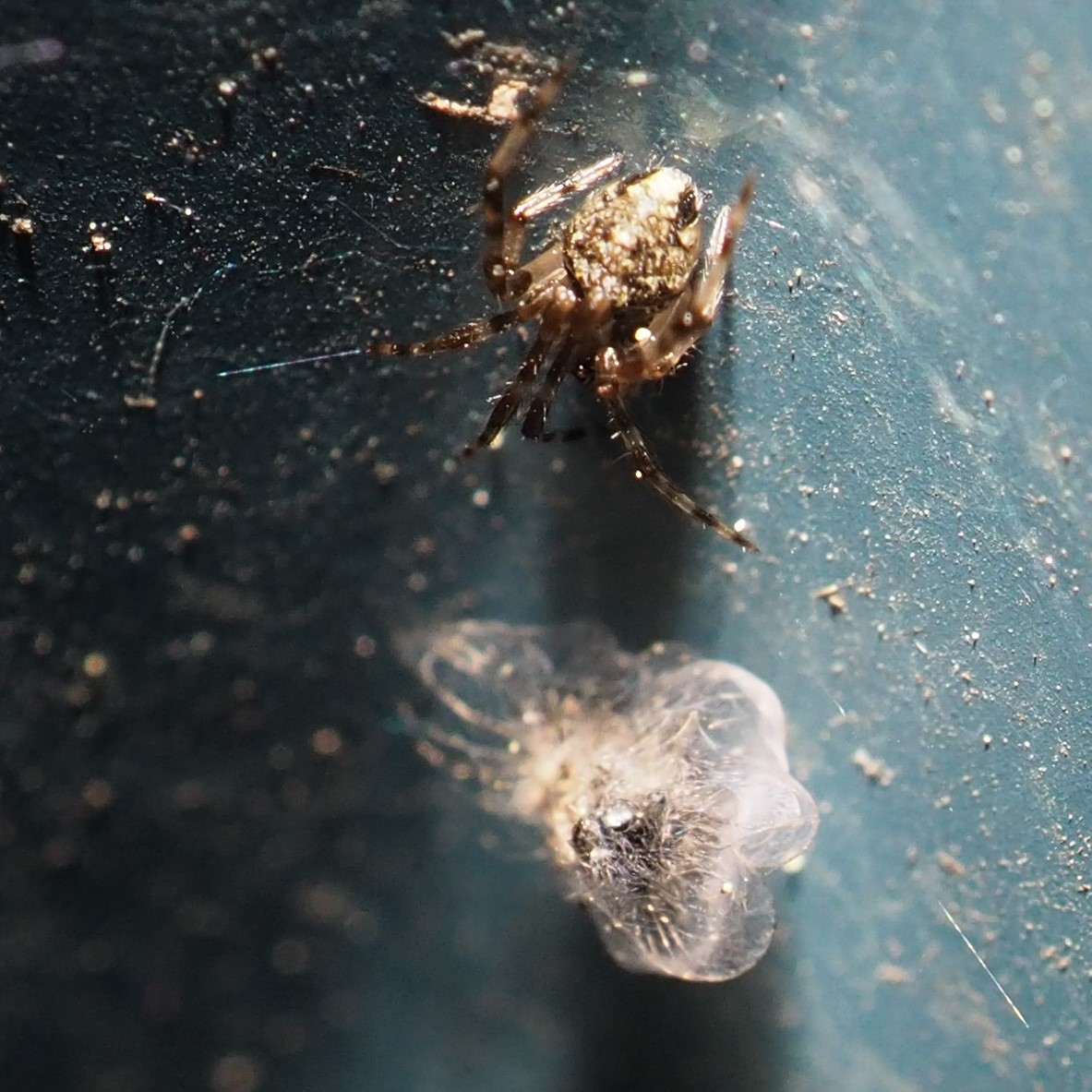

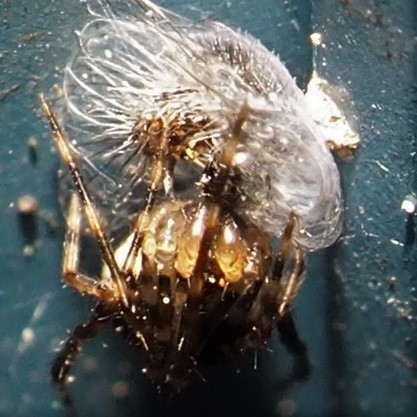
Here is a Running Crab Spider running along (two pictures). Isn't it amazing to see that face on the BACK of the head of this Spider? Third is a hairy Cobweb Spider.
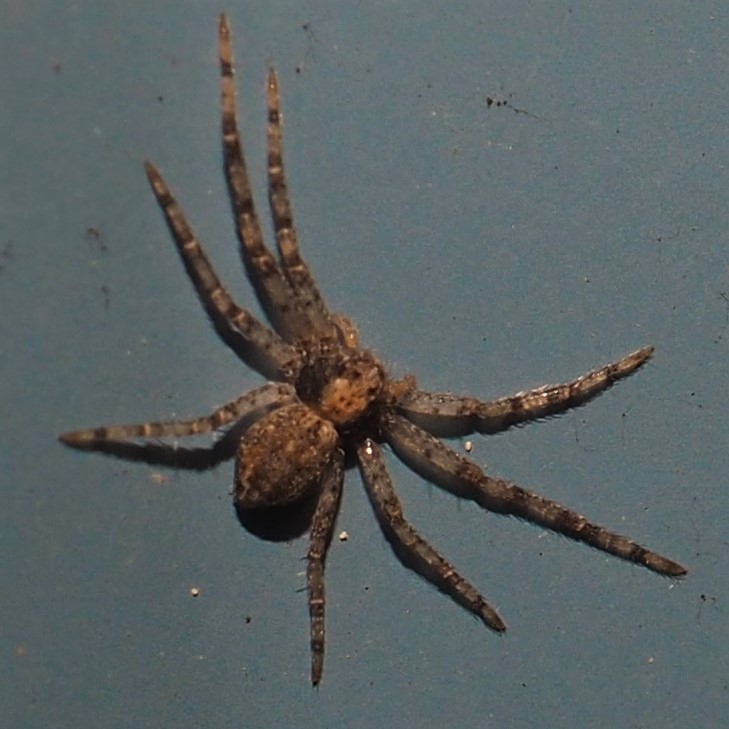
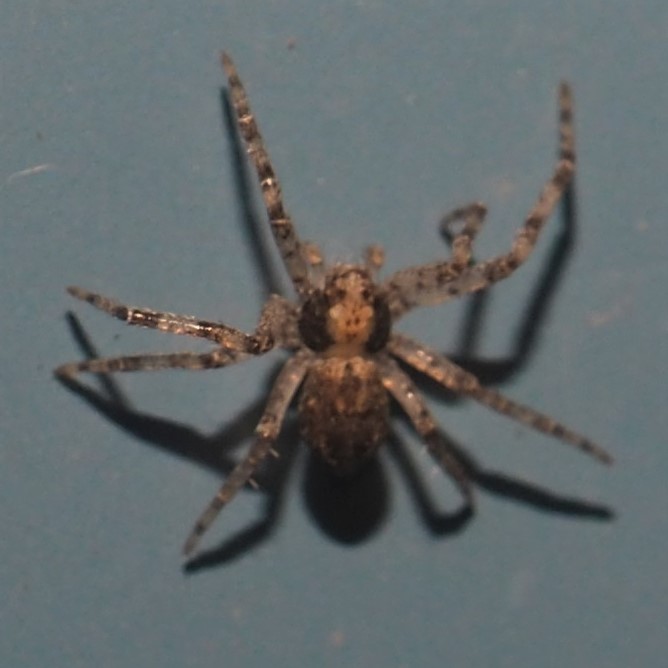
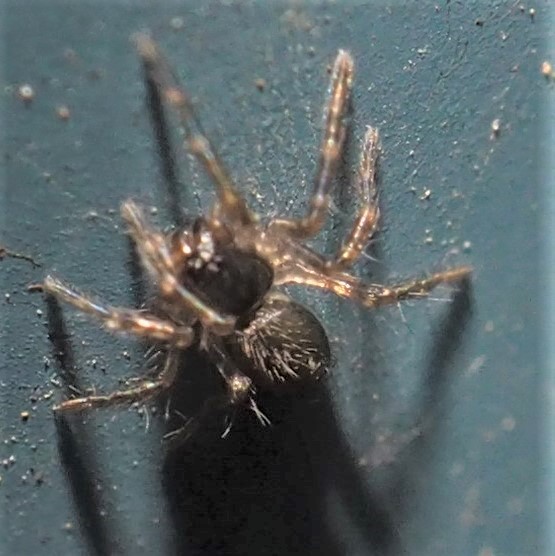
Just to remind you that Spiders also come in wonderful colors, here is the Horned Parasitic Cobweaver going through some of its moves.
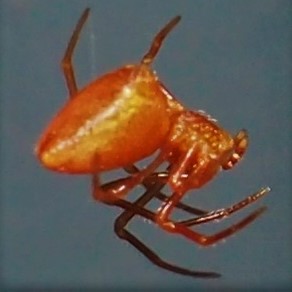
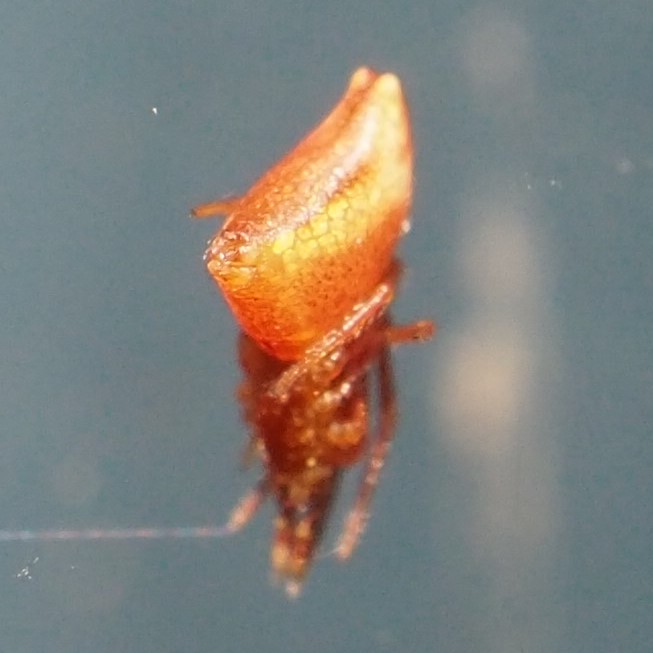
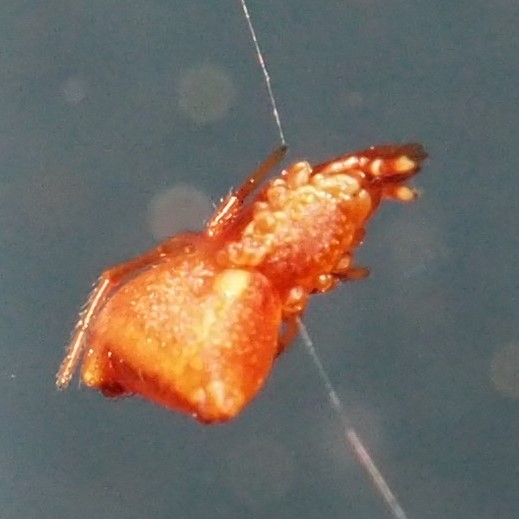
And then another Jumping Spider with a nice stripy abdomen.
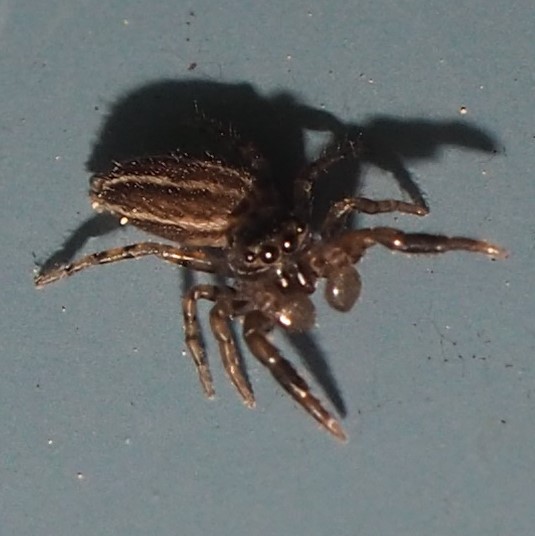
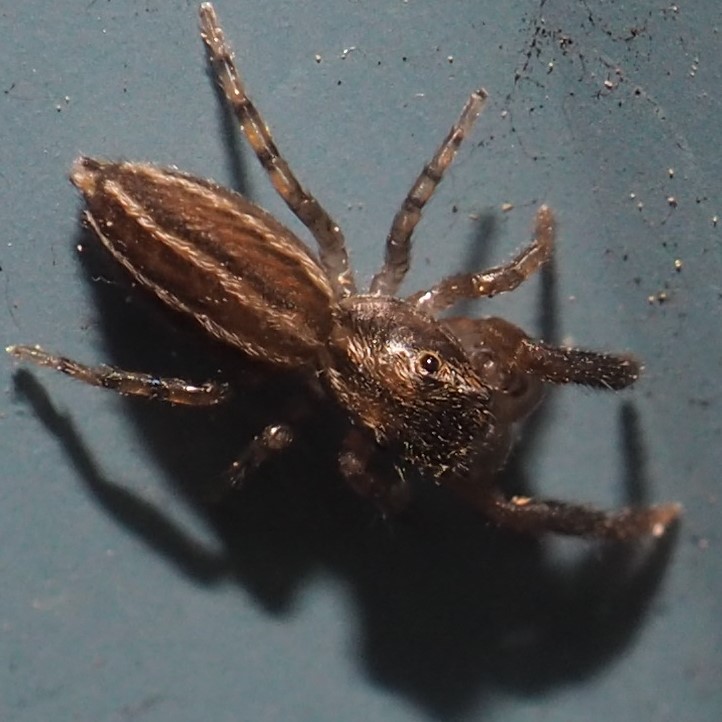
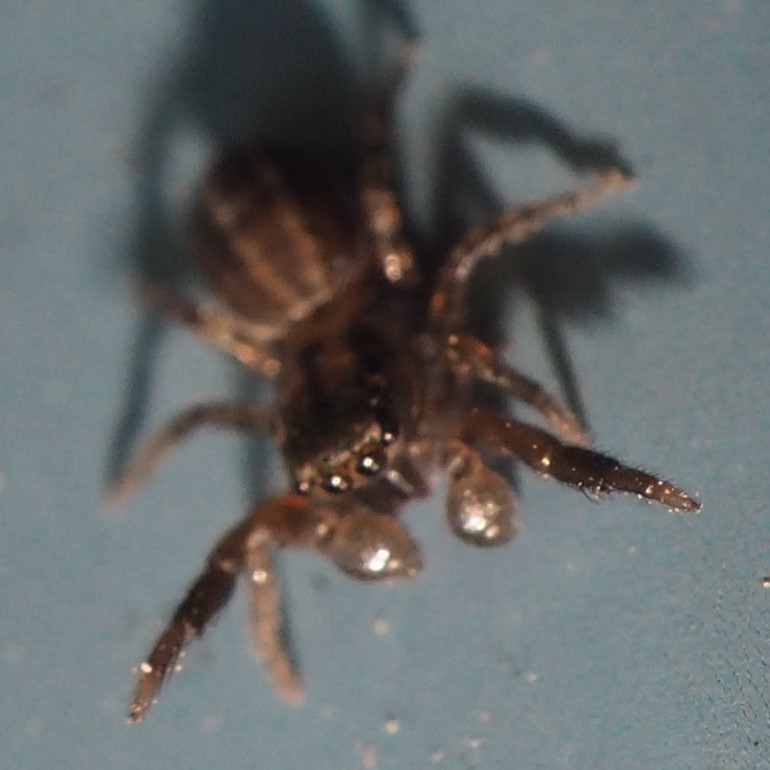
Here is an Orchard Orbweaver, Leucauge venusta, in its early patterns. Third is how it will look in July when its colors come through.
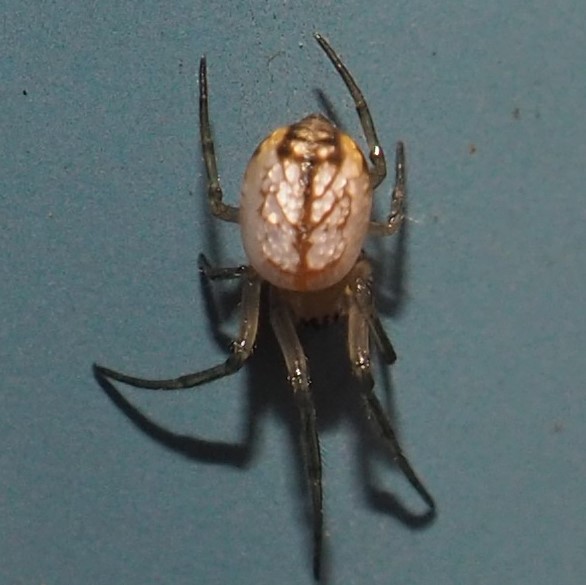
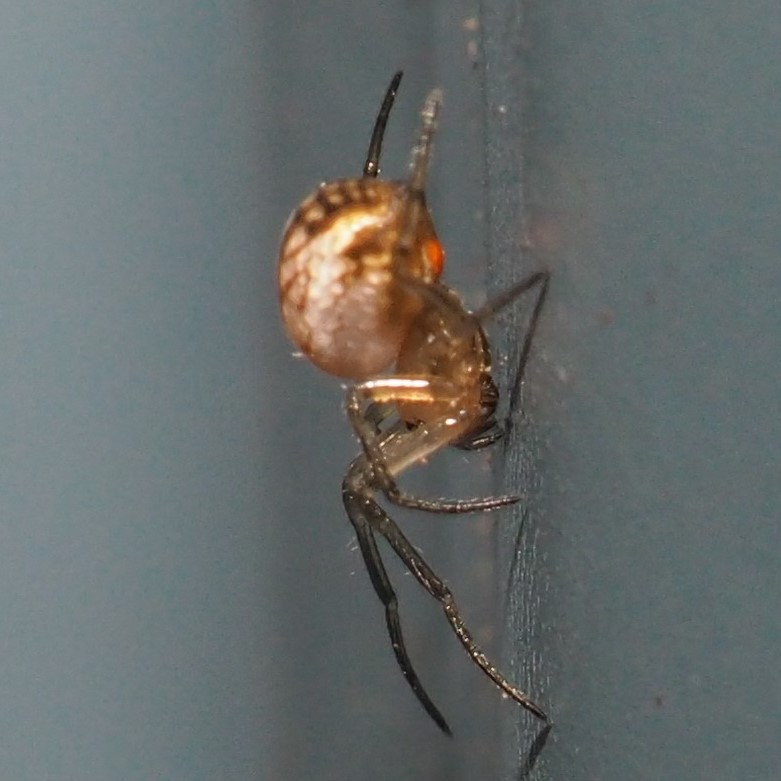
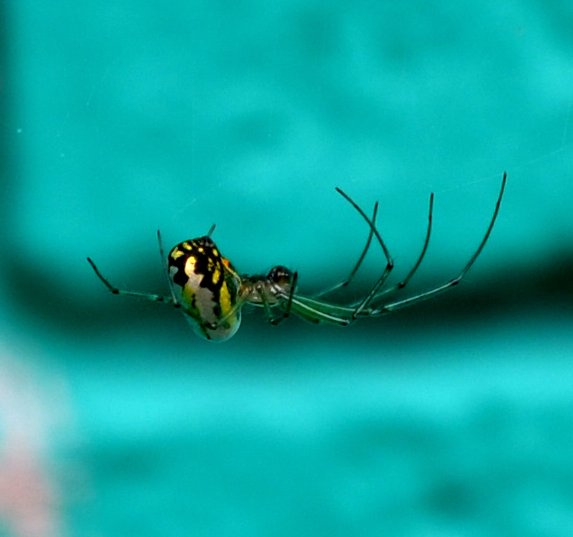
A little red and black Spider played around for quite a while this afternoon.
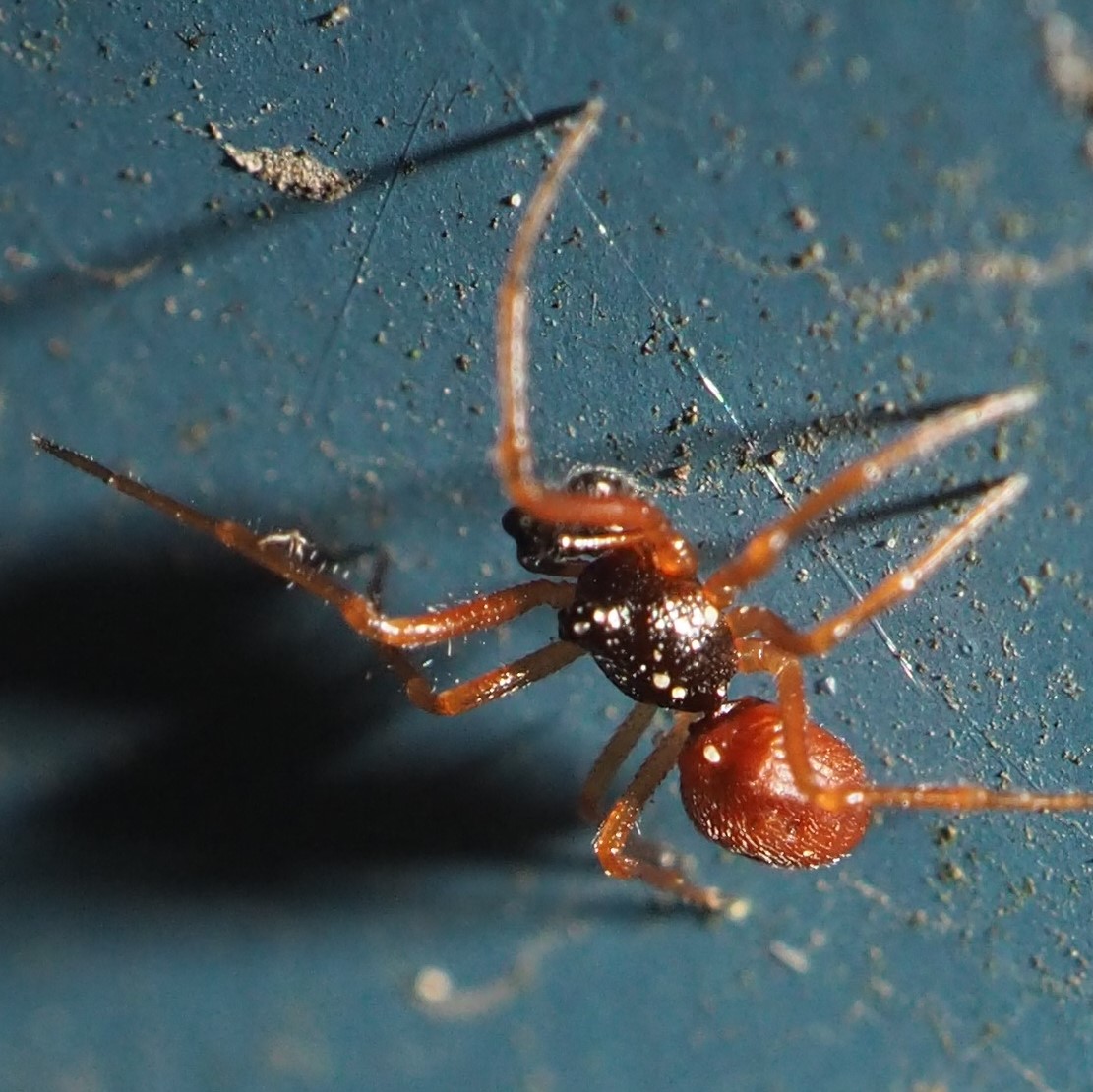
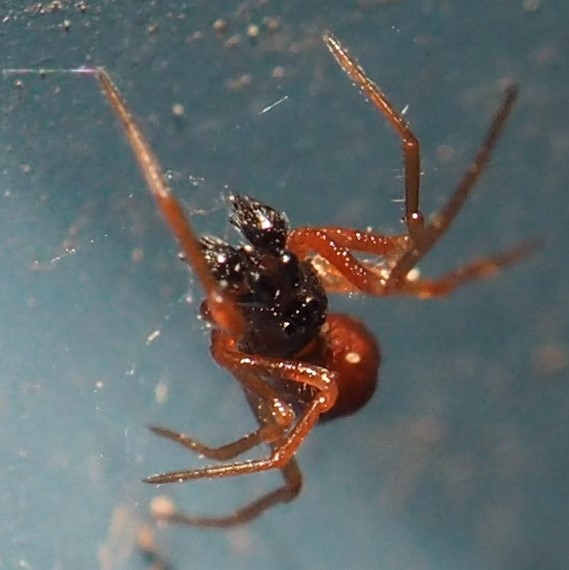

Finally a little wasp runs across a leaf. Third I believe is an Ichneumonid Wasp.
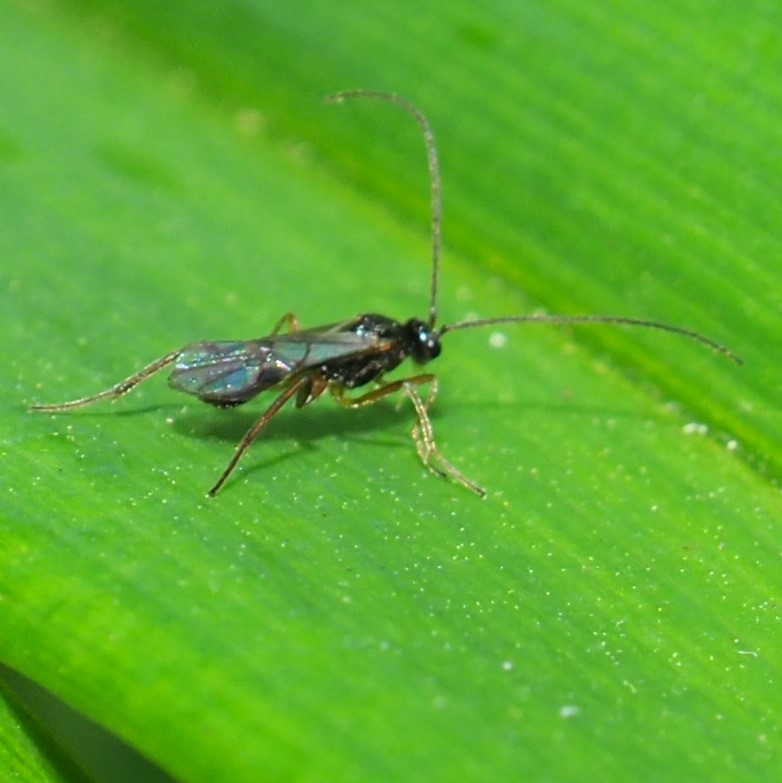
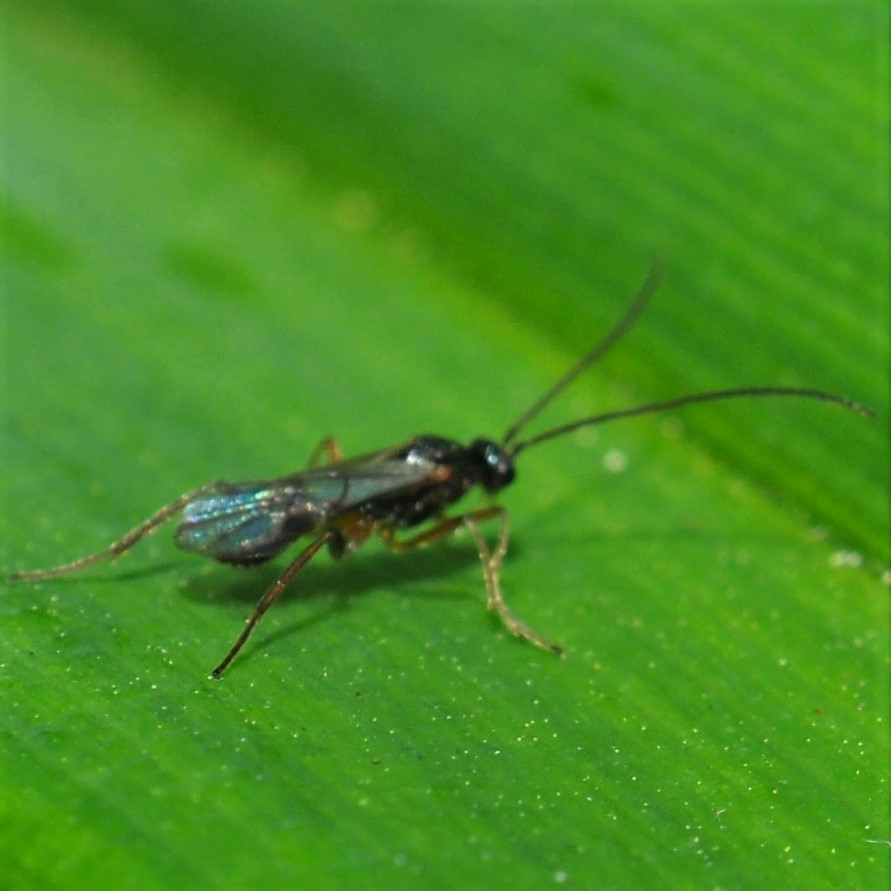

That's about it for the Flora and Fauna of this yard this week. I hope everyone has had a good one. Take care now and in just a few days it will be June. Maybe you would like to drop by when the weather is more nearly stable, and see the creatures in person. Give a call first!
Love, Martha
PS. Here are some color-morphs of Dame's Rocket from 2019. Feel free to use them with attribution. :-)



Back to May 9, 2021
Forward to May 23, 2021
Back to main menu
copyright Martha O'Kennon 2021







 H
H

















































































